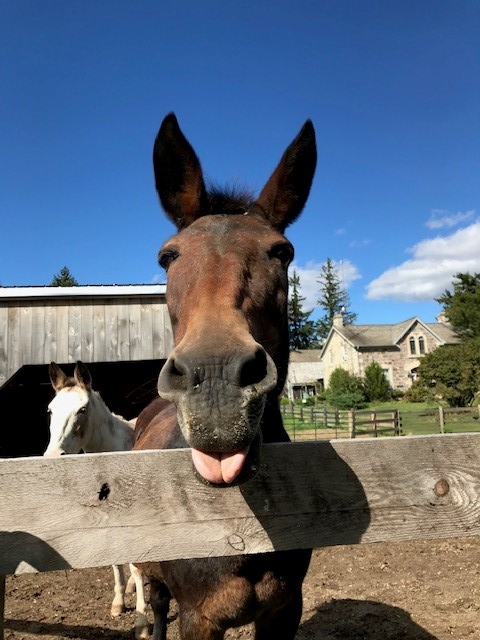
The Donkey Sanctuary and its Original Stewart Owners
This is the early history of the farm property that is now The Donkey Sanctuary of Canada (DSO) in Puslinch Township in Wellington County, Ontario, Canada, southwest of the city of Guelph. The farm was originally owned by a family named Stewart from the southern Highlands of Perthshire, Scotland. The best known member of this family was Peter Stewart who built the house shown above. This is the story of Peter Stewart’s family.
A detailed accounting of this family is now available on the following pages on this site:
Attawondaron Lands
But before the Stewarts arrived, this land belonged to the Attawondaron First Nation. The early French explorers called them the Neutral Nation, because they remained neutral between the Huron and Iroquois peoples.
Europeans began encroaching on this land in the early 1600s. Our trickle became a flood of immigration after the American Revolution in 1776. By the early 1800s, the nearby towns of Guelph, Hamilton, Cambridge and Galt were already established, and European immigrant farmers were moving in en masse to gobble up the land and establish pioneer settler farms.
Our Stewart ancestors were among them.
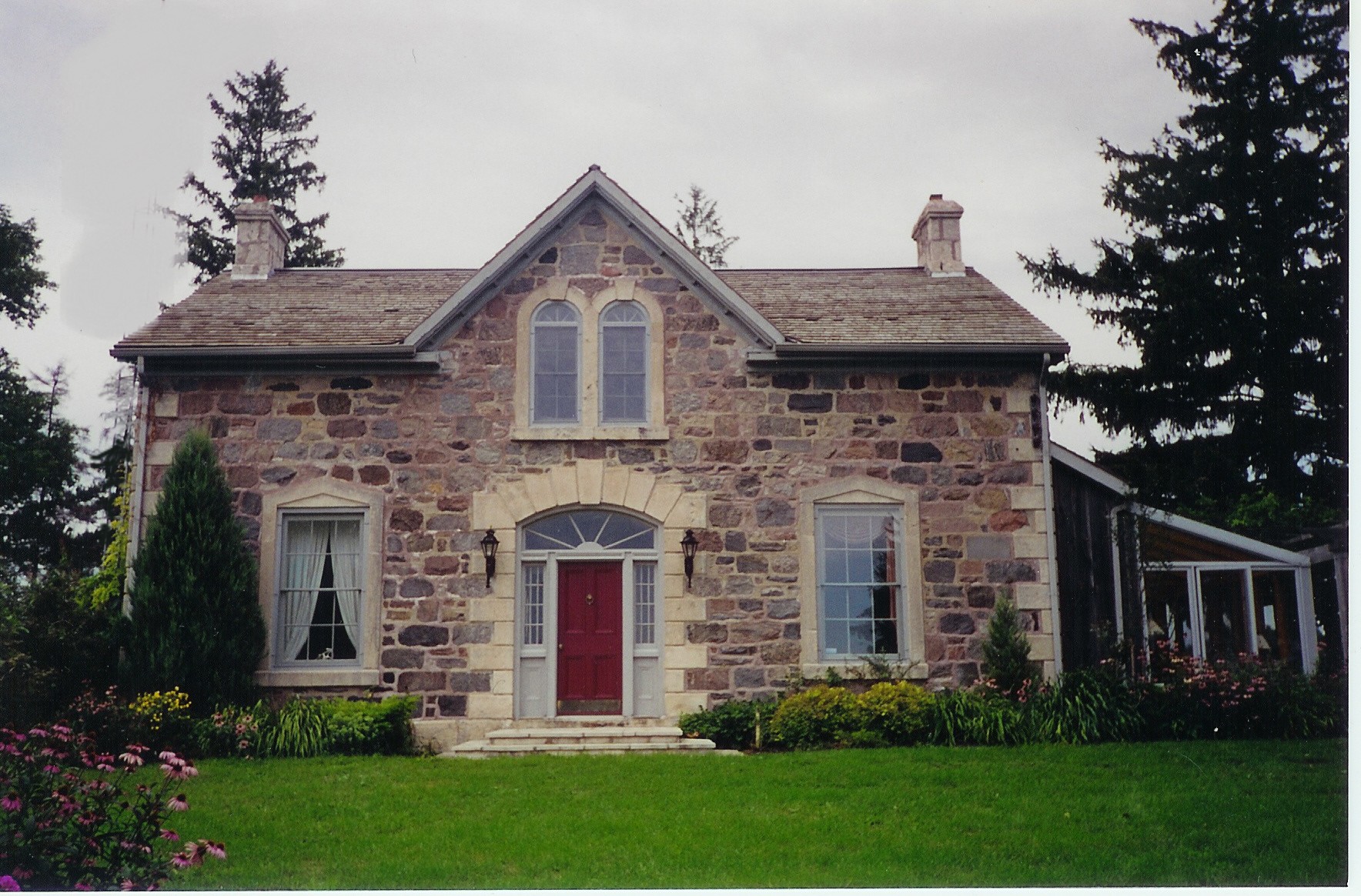
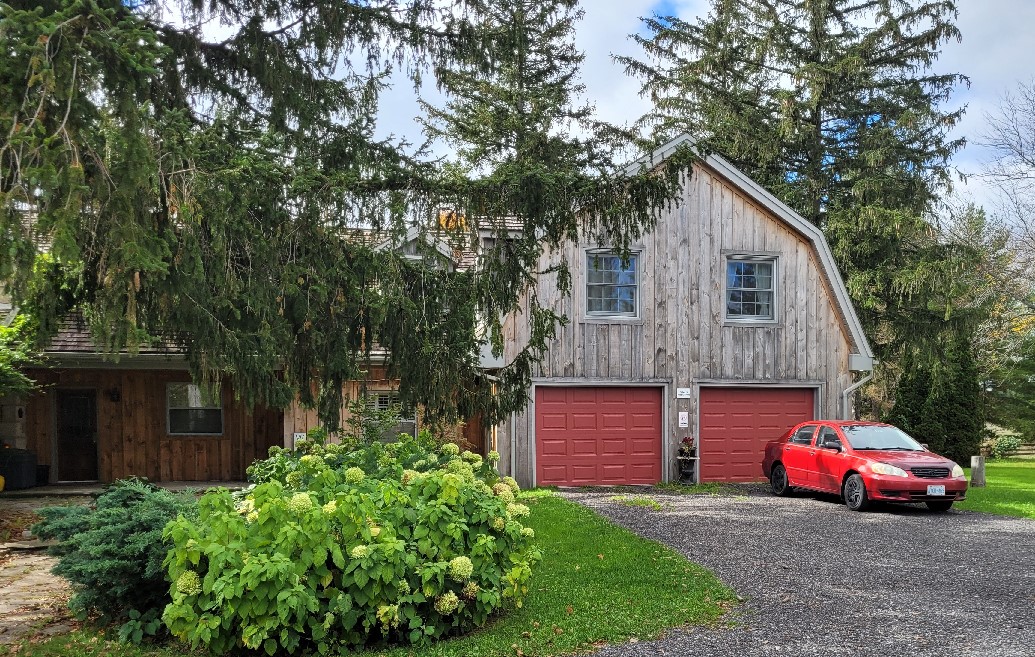
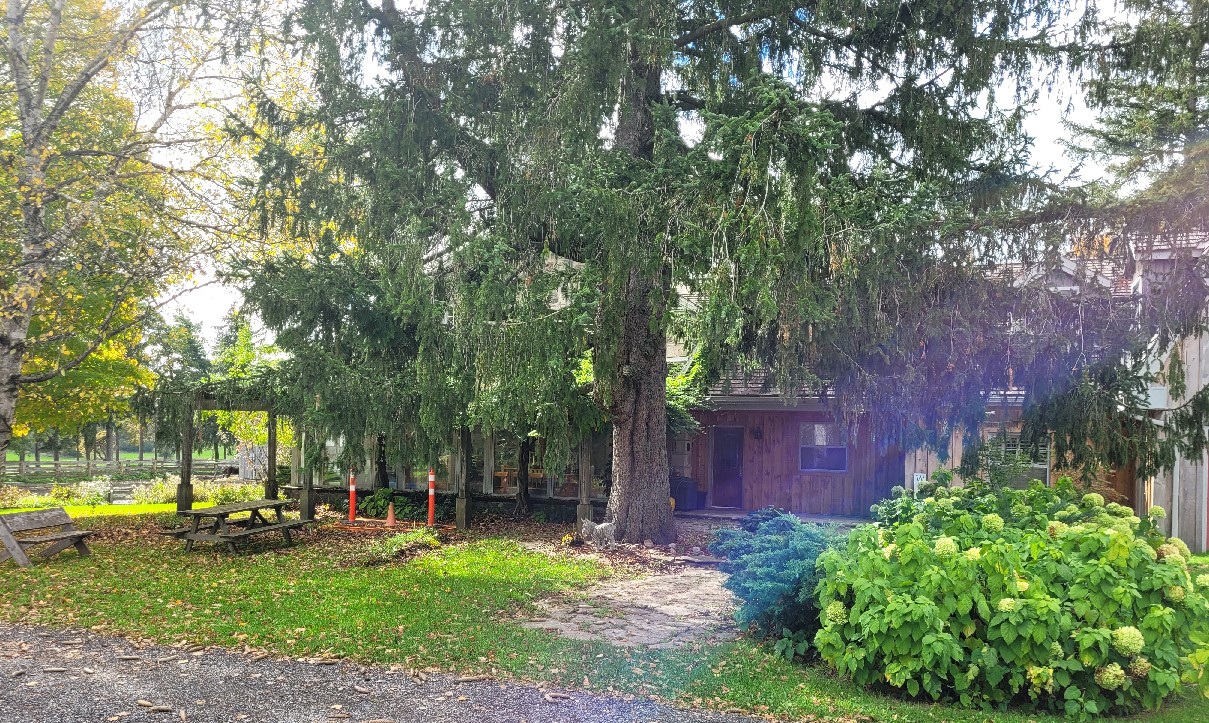
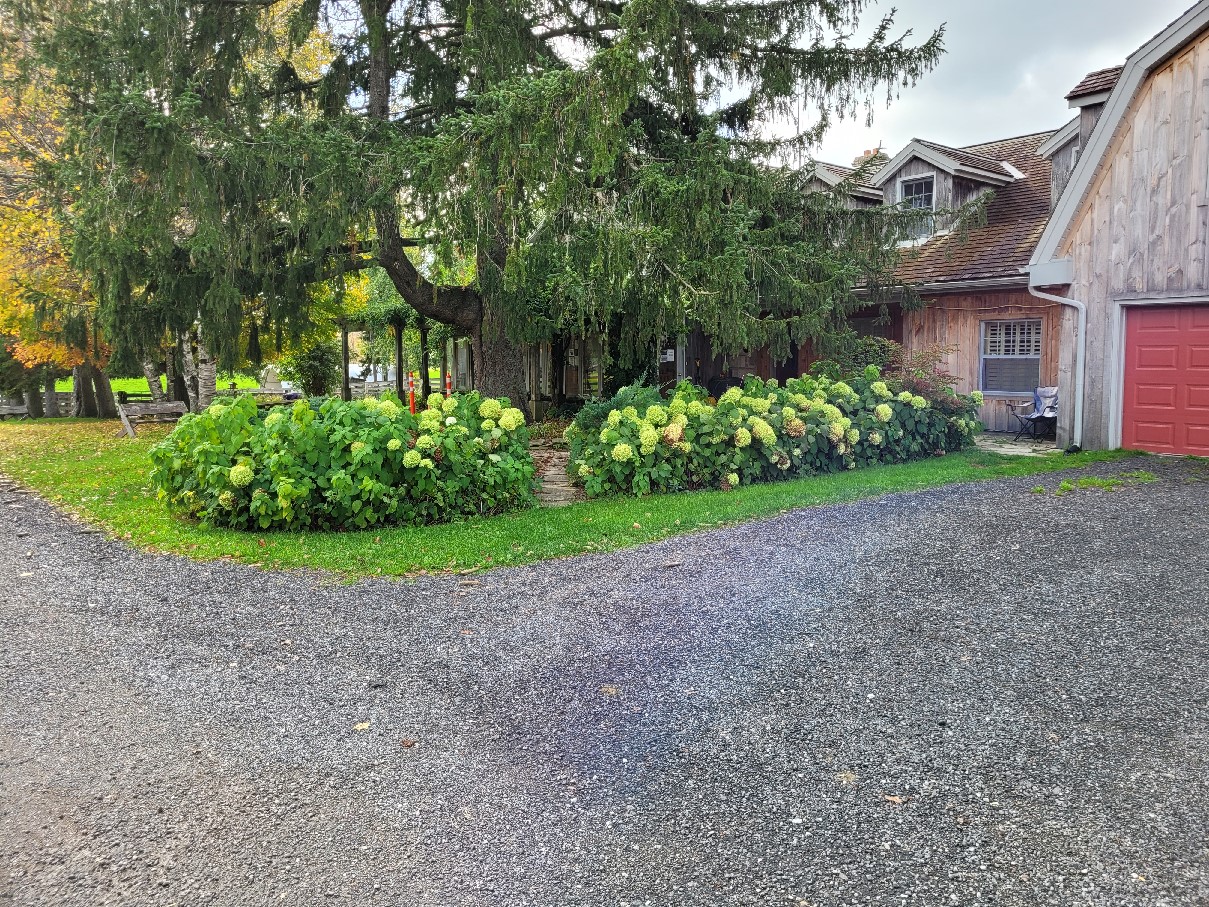
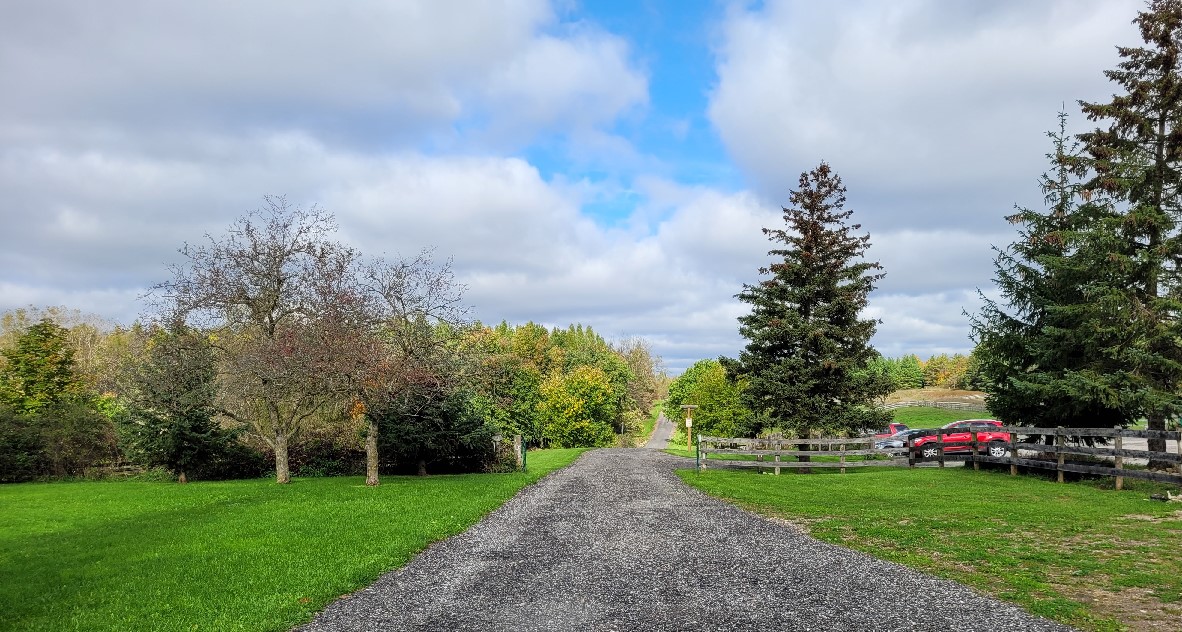

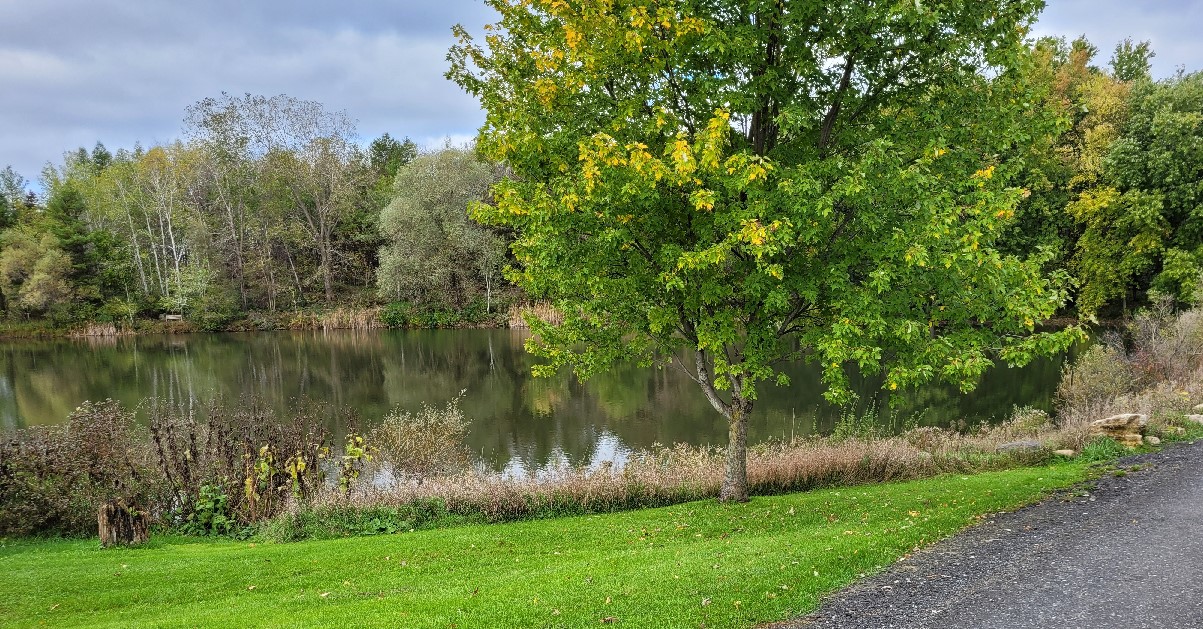
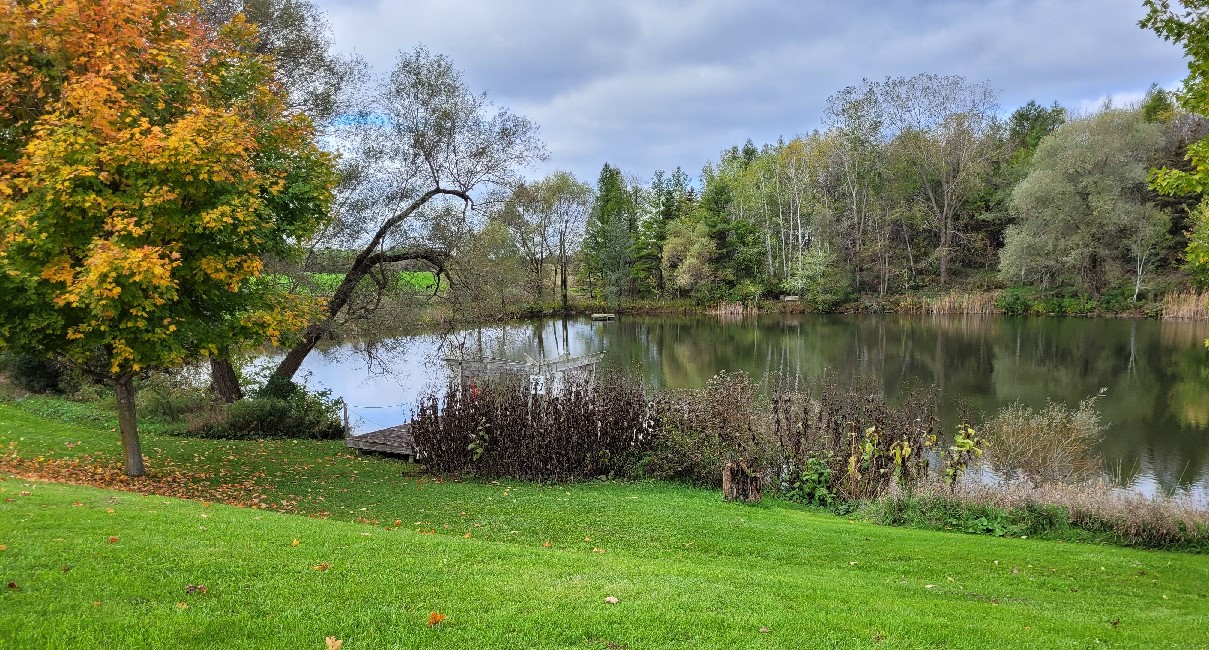
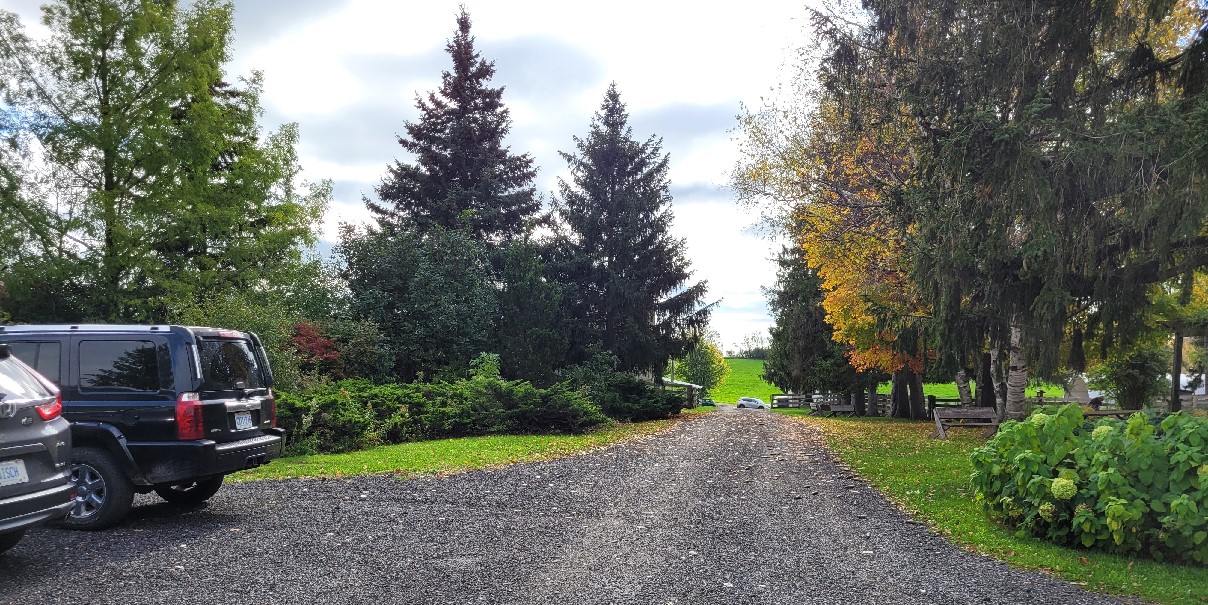
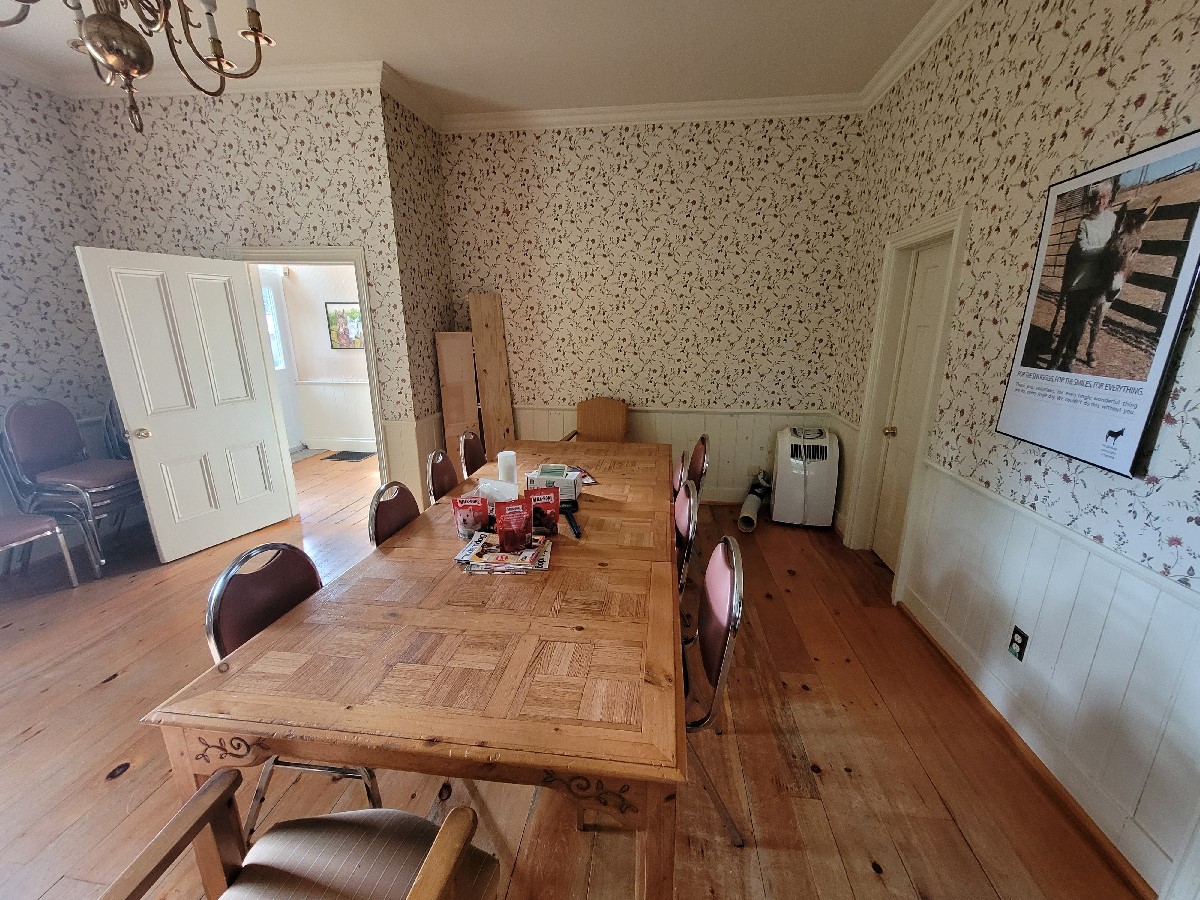
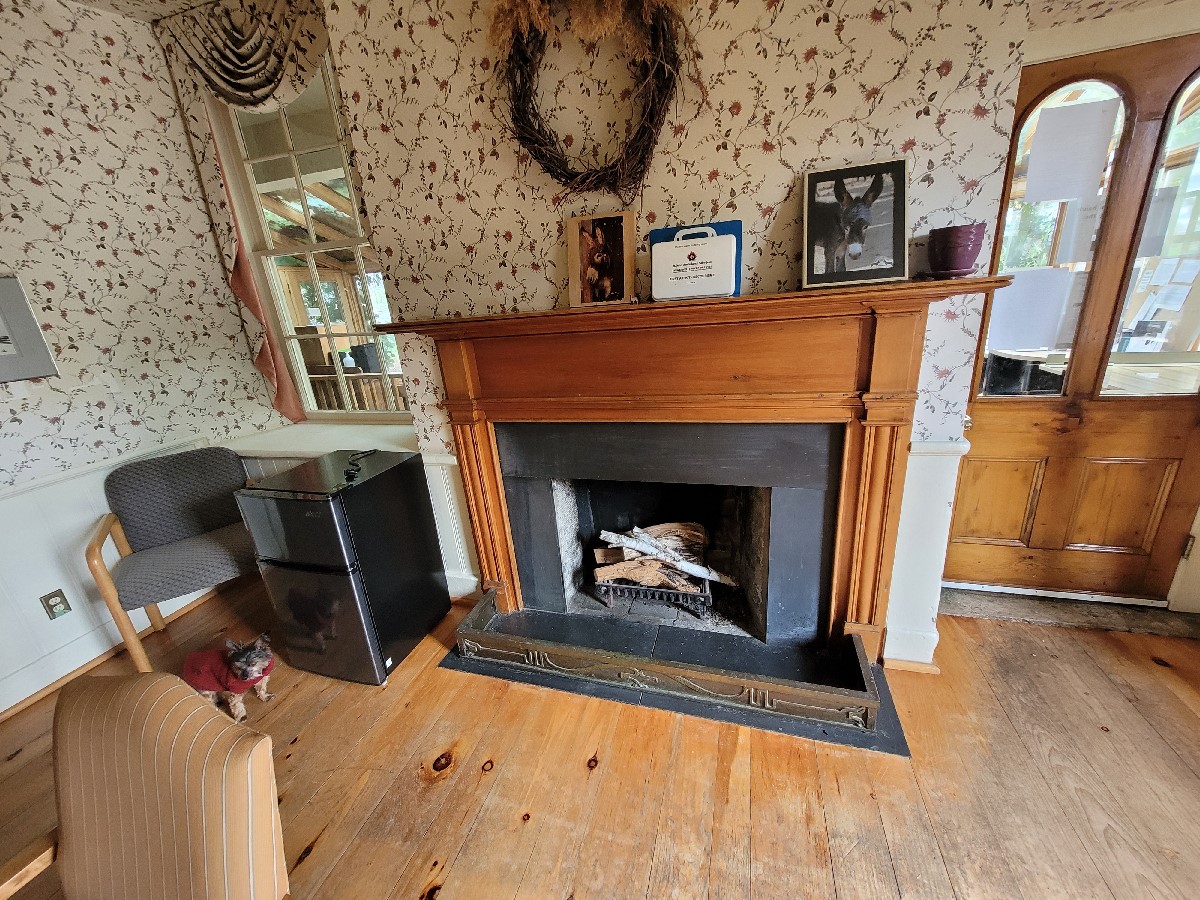
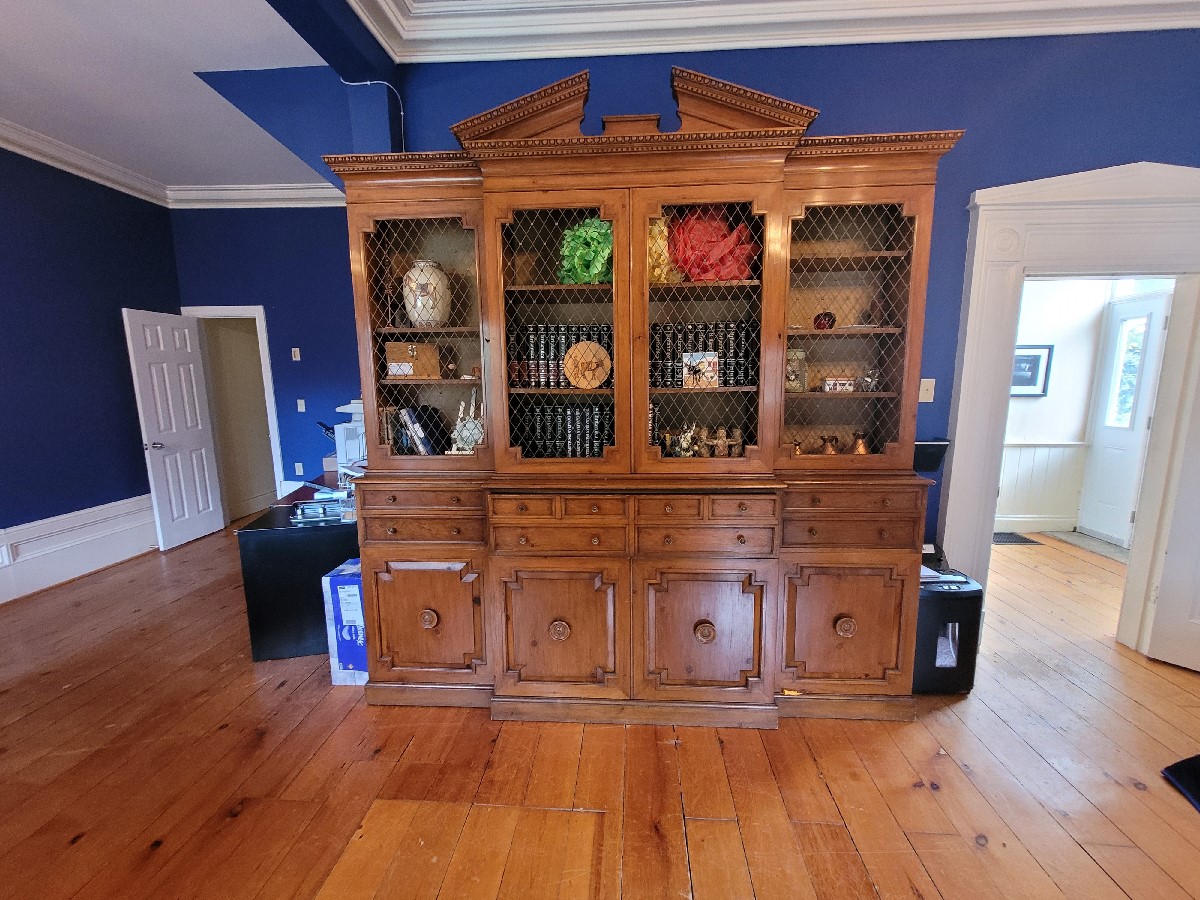
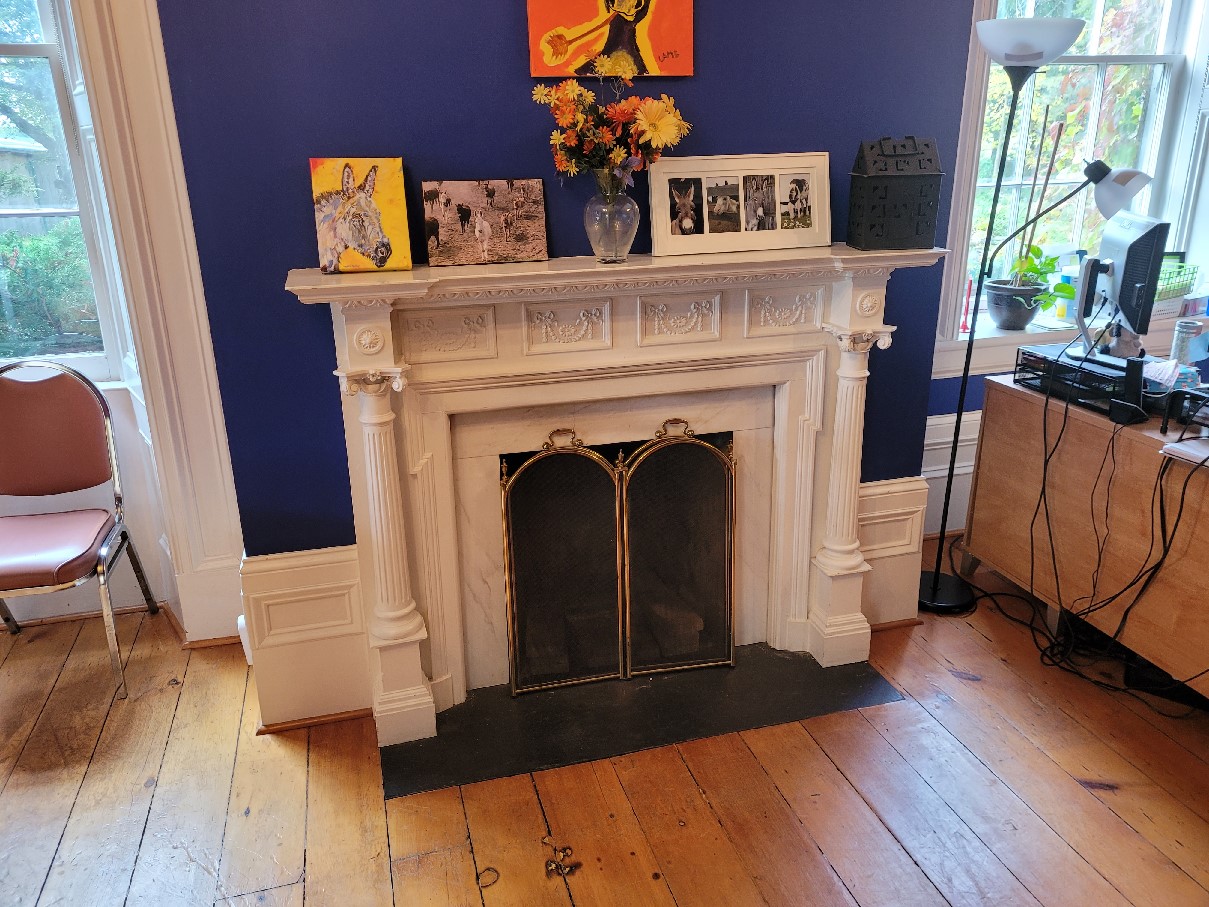

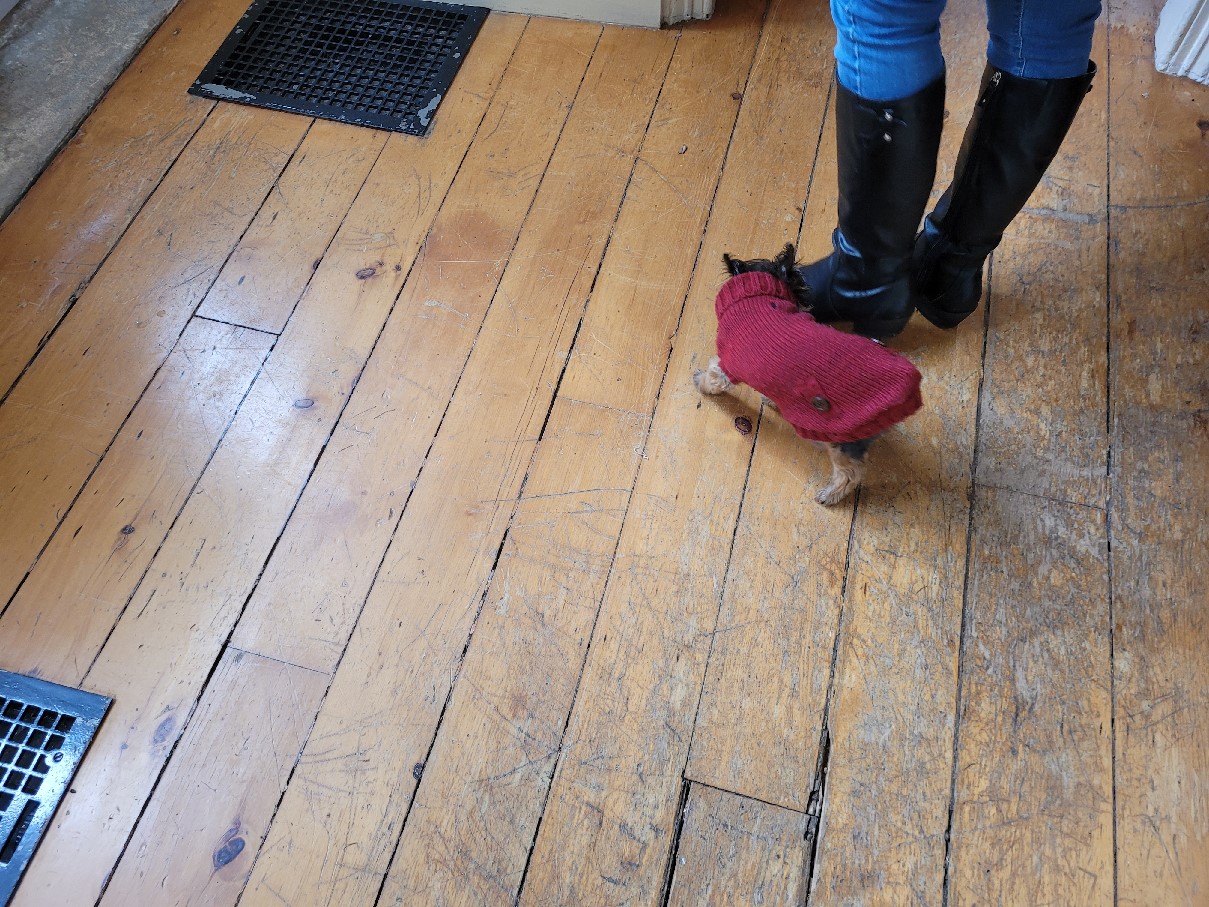
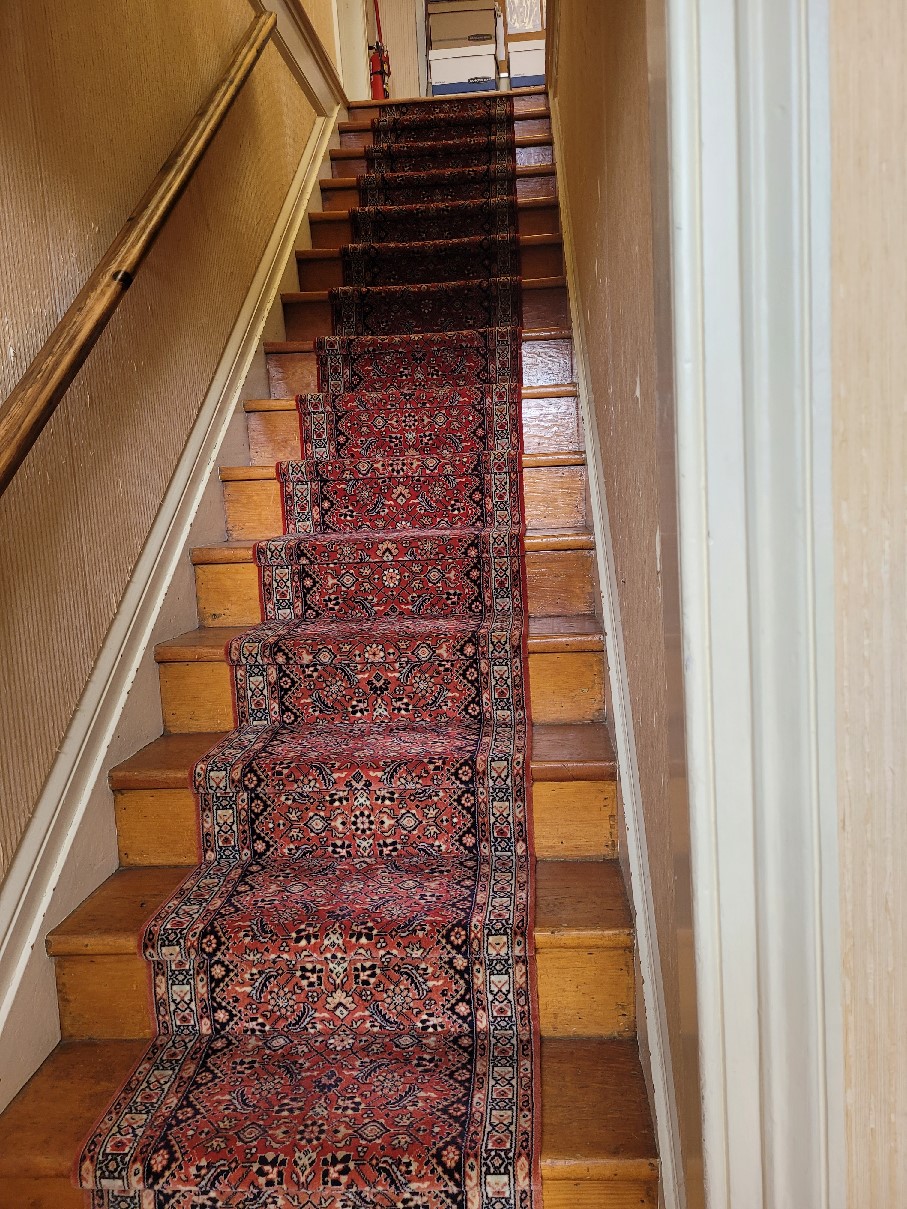
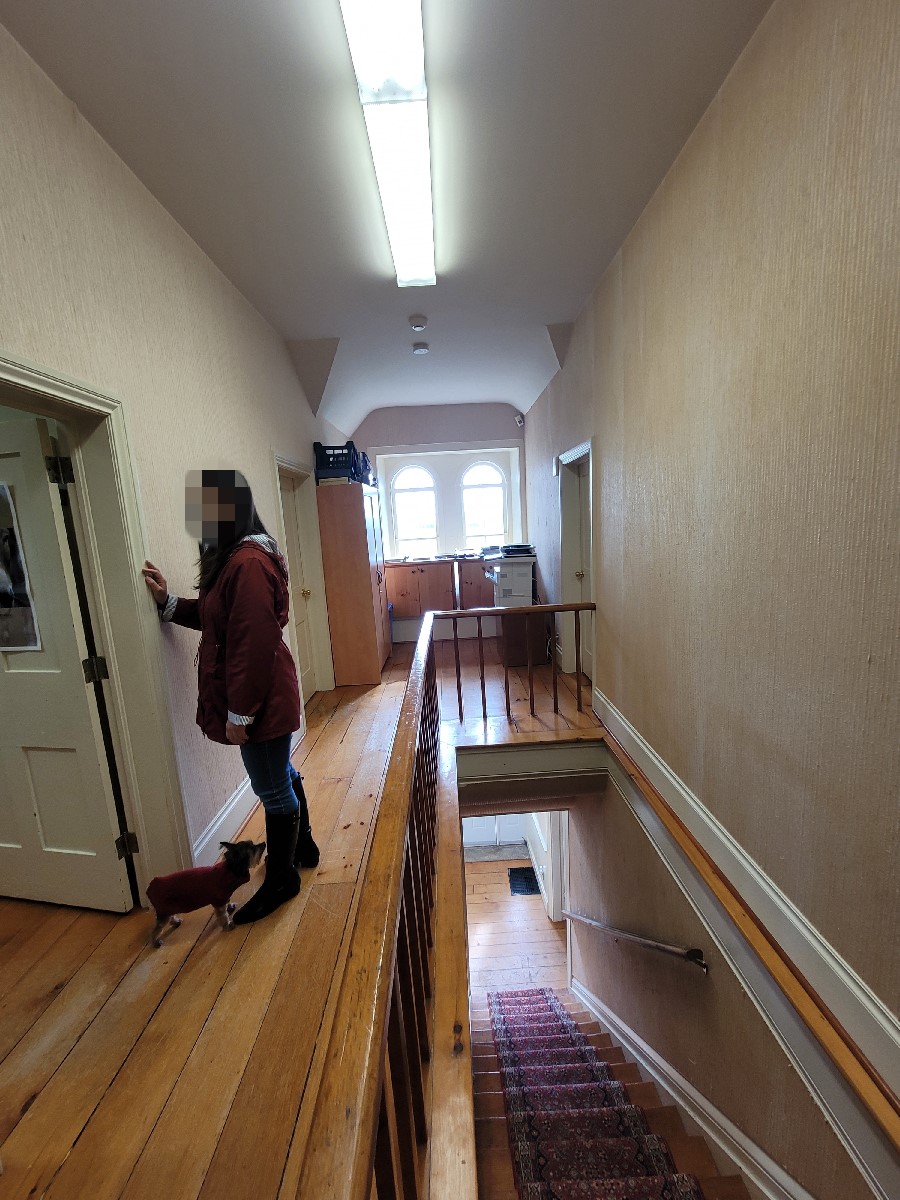
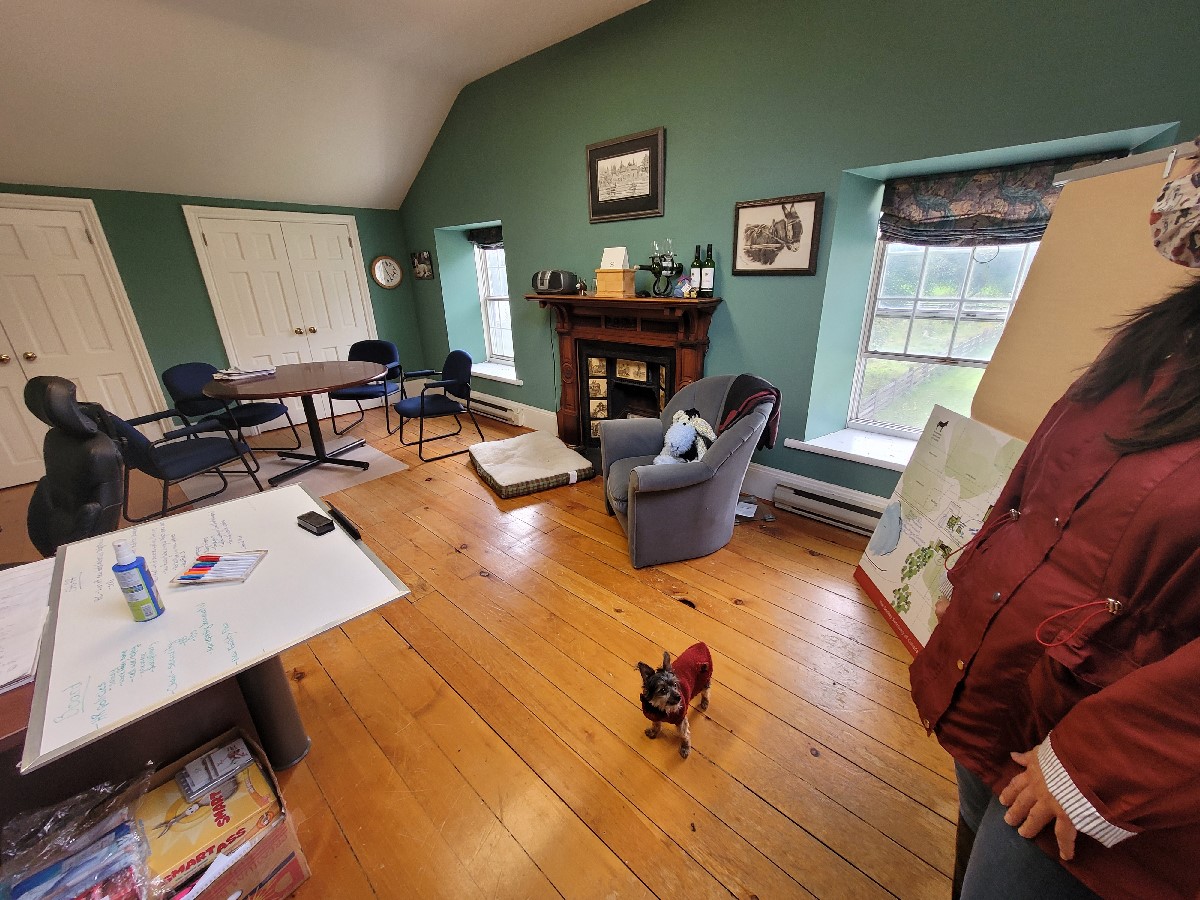
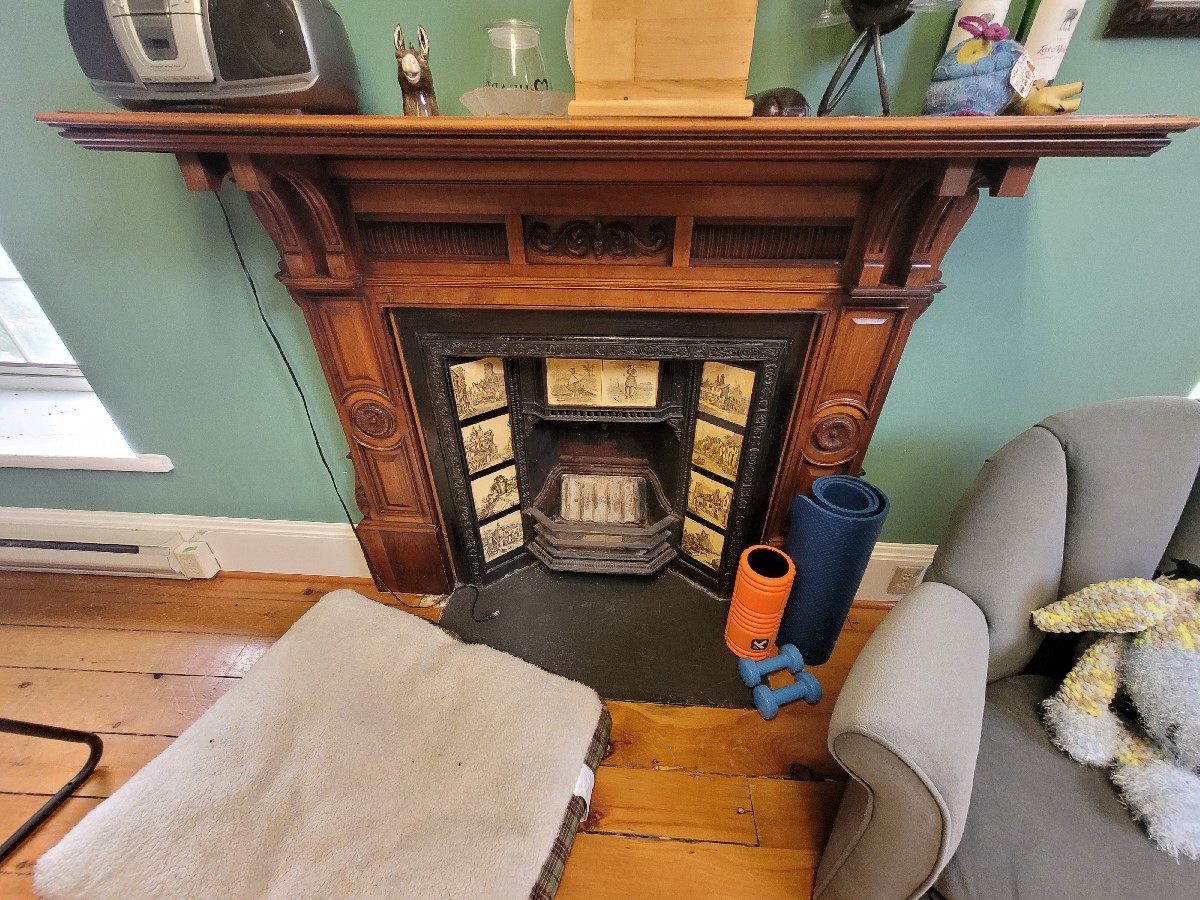
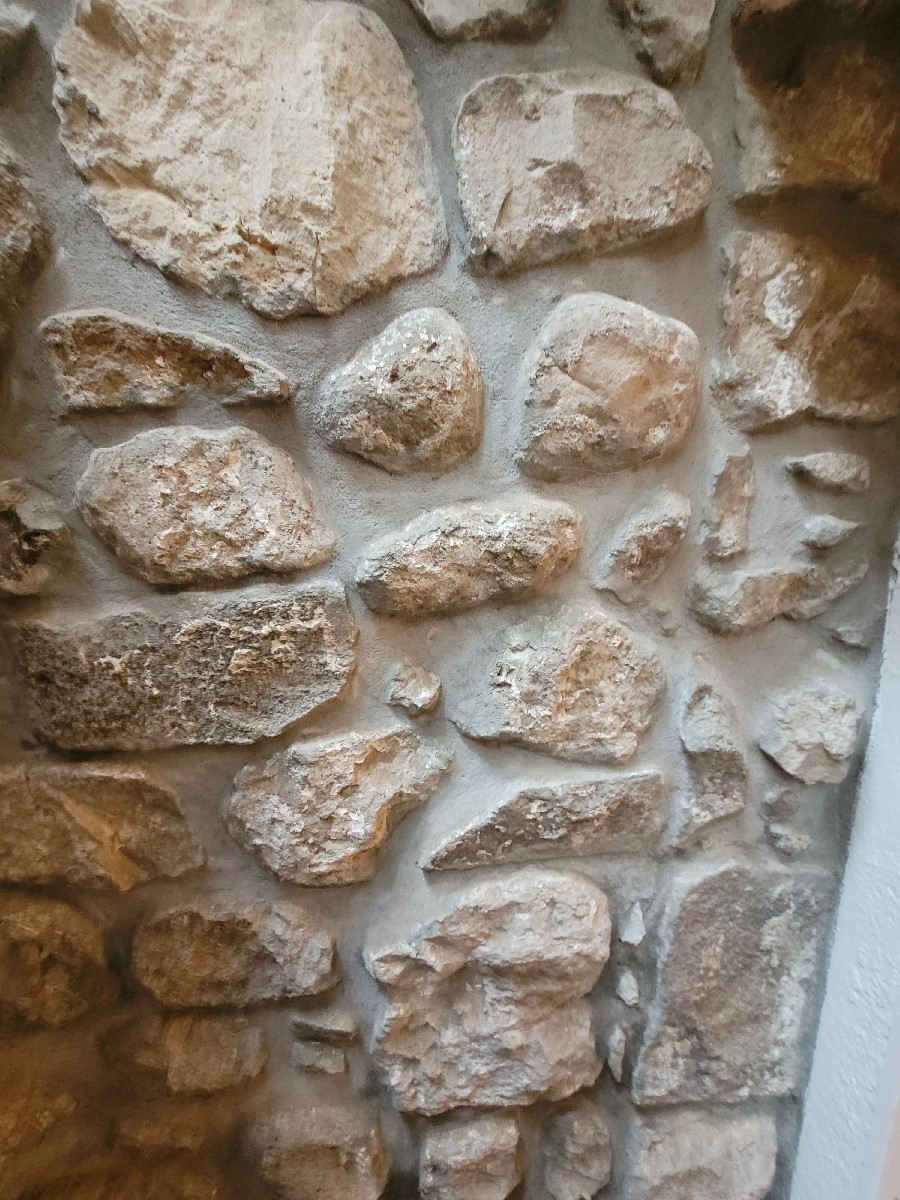
Morell
Peter Stewart and his ten siblings were born in a clachan settlement in the Highlands of Perthshire, Scotland, called Morell, which is located in Easter Glentarken on the shore of Loch Earn.
It was a community of impoverished flax weavers, barely eking out a living in houses built of stones with thatched roofs. Most of the inhabitants, including our Stewarts, were fluently bilingual. Gaelic was their native language spoken in the home, but the government schools forced them to learn English which aided them in doing business with Lowlanders to the south.
This is the actual house that Peter and his ten siblings were born in. This is Morell.
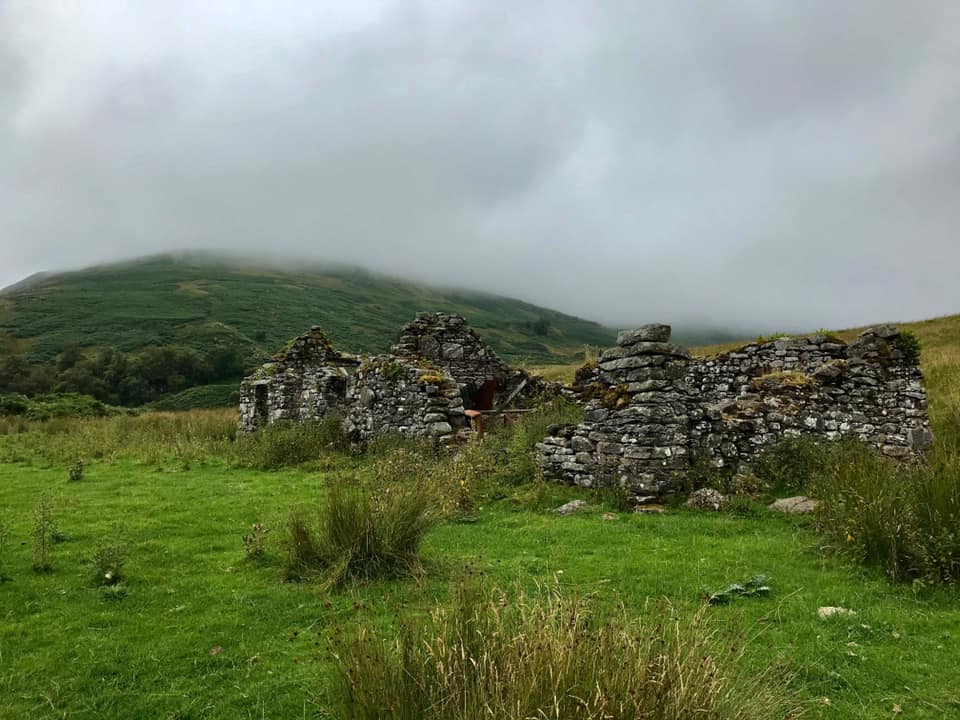
The name Morell may derive from the Gaelic, mor ail, which means “big rock”, possibly named after the giant Ice Age era rock that stands nearby.
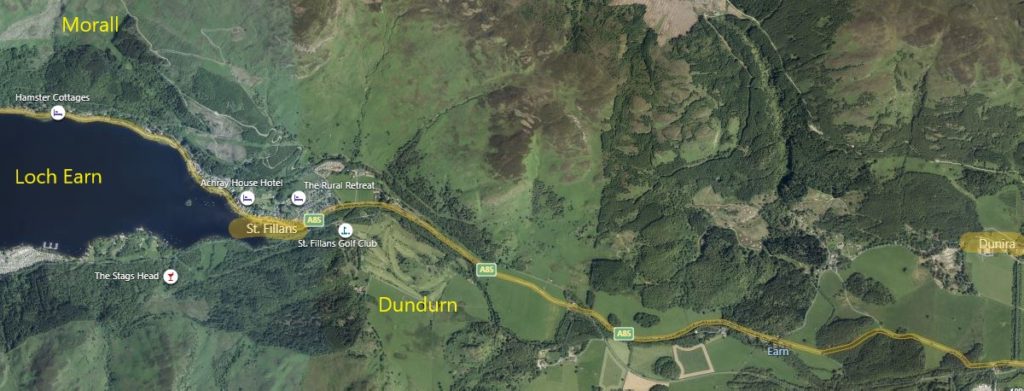
Dundurn – where Sir Allan MacNab’s uncle lived.
Dunira -Sir Henry Dundas’ estate
Sir Allan MacNab, Premier of the Canadian Provinces in the mid-1800s, named his mansion home in Hamilton, Ontario, “Dundurn Castle”, after the farm in Scotland where his ancestors had lived for generations. The original Dundurn farm is located just east of Loch Earn in Upper Strathearn, Perthshire, in the southern Highlands of Scotland, two kilometers east of Morell. At the time of our Stewart family’s emigration, the laird of Dundurn (Scotland) would have been Sir Allan MacNab’s uncle.
Two kilometers east of Dundurn was the estate farm of Dunira, owned in the late 1700s by Lord Henry Dundas, 1st Viscount Melville, after whom the nearby town of Dundas, Ontario is named.
The Clearances
In the early 1800s, during a time known as The Clearances, absentee landlords in Scotland were expelling Highlanders from the homes that their families had occupied for hundreds of years. The landlords could make more money from farming sheep than housing tenants. Many were evicted at gunpoint and forced to emigrate to the New World. This happened to the residents of Morell, but not at gunpoint. Their landlord merely kept raising the rent until the families could no longer afford to stay and were forced to leave.
Robert Stewart (Sr) in Morell
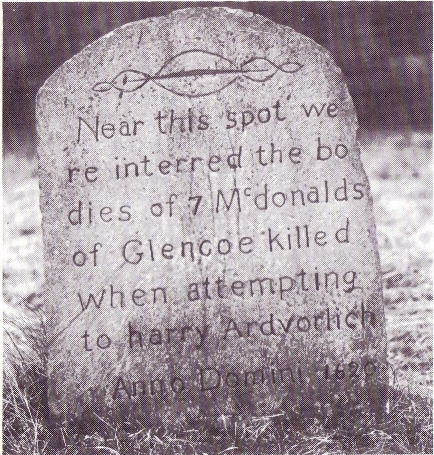
Robert Stewart was born in 1762 in Morell. He married Catharine MacNaughtan (Highland women did not follow the English custom of taking their husband’s surname) and they continued to live in Morell where they had 11 children.
Robert Stewart was descended from the Stewarts of Ardvorlich, the senior branch of the Stewarts of Balquhidder — a Highland clan with a colourful past. His grandfather had died at the Battle of Culloden, fighting for Bonnie Prince Charlie and the Stewart cause. The family was loyal for a reason. Robert’s 12x-great-grandfather had been King Robert II, the first of the Stewart kings of Scotland, grandson of the Hero King Robert the Bruce. The name Robert was preserved in the family.
A detailed accounting of Robert’s ancestors can be found by clicking the button:
Around 1830, Robert Stewart died of unknown causes. Three years later, his widow Catharine and their children, along with a handful of grandchildren, made the difficult decision to leave the only home they’d known to move halfway round the world to an unknown land called Upper Canada.
They packed up all the belongings they could carry and headed to the port city of Greenock, Scotland, where they boarded a ship bound for Montreal. The journey involved eight weeks in the windowless hold of a wooden ship, with little food and lots of sickness. One of Catharine’s sons-in-law contracted cholera on the journey and died.
Arrival in Hamilton, Ontario, Canada after losing everything
From Montreal the family travelled to “Muddy York”, Upper Canada (Toronto, Ontario) by French Canadian oxen-pulled river barge. At one point their barge wrecked on a rock and the family had to cling to the rock all night until morning before being rescued. They lost all their possessions at the bottom of the river and had to carry on with only what they had on their backs.
They carried on to Hamilton where they were quarantined “until the next fall” (presumably for several months) because of the one case of cholera back in Montreal. The city of Hamilton had just suffered a major cholera outbreak, specifically from peasant immigrant ships, and the city was in the midst of a cholera panic. Anyone who was even suspected of having been in contact with a cholera case was locked up and quarantined until it could be determined for certain that they were safe. Of course, they were locked up with known cholera cases and many who did NOT have cholera before they were quarantined contracted it because of the quarantine. They were released from quarantine in the fall of 1834.
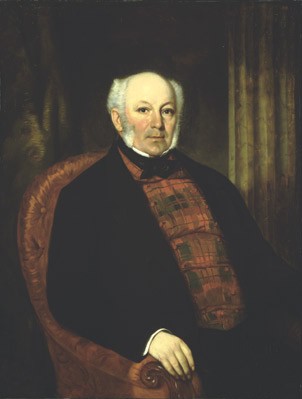
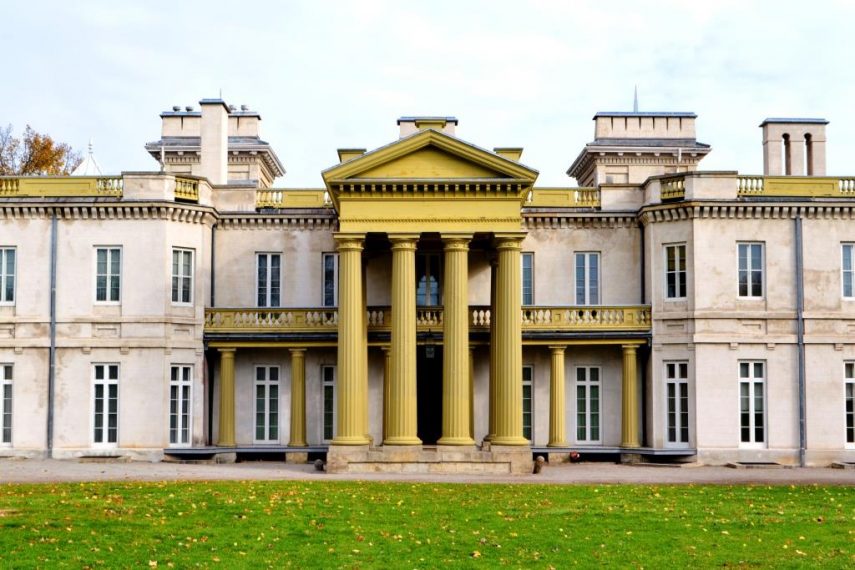
Sir Allan MacNab helps the family
Having lost all their possessions and having nothing to their name, they presented themselves at the home of the relative of their former neighbours back home, namely, Sir Allan MacNab. At the time, the Dundurn estate in Hamilton included several smaller houses around the periphery. MacNab offered to put our Stewart family in one of those homes and helped to get them established. It is likely that their connection was more than merely neighbours back in Scotland, as Widow Catharine MacNaughtan’s mother was a MacNab.
Splitting Up the Family
At this point the family separated into two groups:
- the elder siblings remained in Hamilton
- Widow Catharine and her four youngest children made the trek through the wilderness up to Puslinch, including:
- Robert, age 20
- Catharine, age 17
- Peter, age 13
- William, age 9
A detailed account of the life and descendants of the entire family can be found here:

Duncan Stewart in Hamilton and the skunk
I’m going to focus briefly on the interesting story of one of the older siblings who remained in Hamilton: Duncan Stewart.
Sir Allan MacNab secured a job for Duncan Stewart as a foreman road builder, supervising the building of the Dundas Road (the future Highway 2) from Hamilton to London (at the time a stone road).
“One morning, while building the road, Duncan came across his men gathered around a small black and white furry animal who sat unafraid watching them at the roadside. Duncan, having never seen such a creature before, poked the animal with a stick and then had to proceed immediately home to bury his clothes.”
Apparently, they don’t have skunks in Scotland.
Puréed apple pie
Duncan Stewart’s wife, Margaret Drummond-alias-MacGregor, was reputed to be quite good at baking apple pies. When she came to Canada, she heard all about these excellent pumpkin pies. She tried to bake a pumpkin pie following her apple pie recipe, using chunks of raw pumpkin in the pie. The pie was apparently inedible.
Duncan later moved to Maple Grove in Bayham Township near Tillsonburg, Elgin County, Ontario.
Robert Stewart (Jr) in Puslinch
Meanwhile, Widow Catharine McNaughtan and the younger Stewart children, Robert, Catharine, Peter and William, went north to settle on uncleared farmland in Puslinch on the 3rd Concession, lot 19-rear.
Robert Stewart (Jr) was born in 1813 in Morell, as the 8th child of Robert Stewart (Sr) and Catharine McNaughtan. Robert was still single in 1834 when he and his mother and his younger siblings arrived in Puslinch. Their property is today the Donkey Sanctuary. It seems likely that Sir Allan MacNab aided the family in securing this property.
There was only one road between Hamilton and Guelph in 1834. It would have been a rough dirt path through the forest. At the time that they settled in Puslinch, their land was still uncleared, rough forest — they were true pioneer settlers, and they were the first Europeans to live on their land. Before they could farm their land or even build a house, they first had to clear the land of trees.
First winter in a shanty
Their first winter was spent in little more than a shack. Peter Stewart’s childhood memory described it as “a shanty without any door but an old country blanket hung over.” Bears, wolves, and rattlesnakes were common hazards. Peter recalled a bear actually barging into the shack at one point. As someone who has lived through many southern Ontario winters, I can only imagine what it must have been like. Highlanders were hardy people.
The Stewarts initially shared Lot 19-rear with Robert’s future in-laws, the family of Hugh Gillespie who came from Deanston, Perthshire, Scotland. It is not known if the Stewarts knew Hugh Gillespie prior to immigration or not. But, in 1836, Robert Stewart (Jr) married Hugh Gillespie’s daughter, Mary.
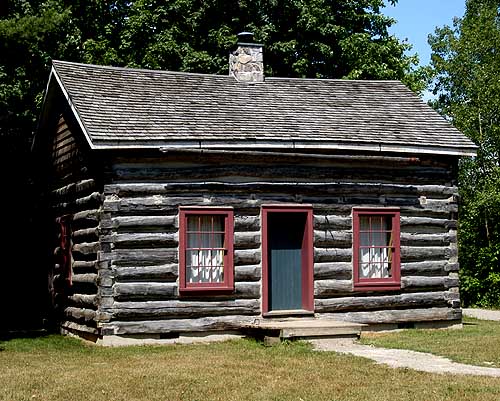
After surviving their first winter in the shanty, they would have begun construction on a log cabin to house the family.
Robert Stewart and Mary Gillespie became the heads of the new Stewart household. Widow Catharine Stewart (MacNaughtan) and unmarried younger sister Catharine Stewart became nannies to Robert and Mary’s four children:
- Robert III
- Hugh (the author’s gg-grandfather)
- Catharine
- James
(Yes, that means they had three Catharines in the small house.)
Tragedy – a family orphaned by smallpox
In 1848, tragedy struck in the form of a smallpox outbreak in the community, killing Robert Stewart, his wife Mary Gillespie, and Widow Catharine Stewart (MacNaughtan), leaving their four children orphaned.
Siblings Catharine Stewart and Peter Stewart (now ages 32 and 28) stepped up to help raise the orphaned children, including Robert (age 12), Hugh (age 9 – my great-great-grandfather) and Catharine (age 7). The youngest orphan, James (age 2), initially went to live with his aunt, Margaret Stewart and her husband William McCallum, in Hamilton, but later rejoined his siblings in Puslinch.
A Quest to Find the Original Stewart Log Cabin
In October 2021, Lesley Bayne, Executive Director of the Donkey Sanctuary of Canada, invited me to the farm for a tour. I was on a quest to locate any evidence of the original log cabin where the Stewarts lived before the stone farmhouse was built. The 1851 census confirms that the family were still living in the log cabin at that time. We don’t know what year Peter built the stone farmhouse.
Rumor had it that there might be evidence of the former log cabin in the woods to the east of the existing property. I was not sure if or how the property boundaries may have shifted over the years. It’s possible these rumored cabin ruins may have originally been on the Stewart farm. Could they be the Stewart’s original cabin?
As Lesley and I approached the present-day eastern boundary of the property, we observed the remnant of an old stone boundary wall, similar to those constructed by farmers in Scotland, when they had to clear stones off their fields in order to cultivate the land.
Construction of the stone wall was likely begun by Robert Stewart in the late 1830s and completed by Peter Stewart after he took over the farm in 1848. (see photos below)
The stone wall runs right alongside the existing fence line, indicating that the eastern boundary of the property has not changed since the Stewarts first cleared this land. If there are ruins of an old pioneer log cabin in the woods beyond we can now say, definitively, that they are not the Stewarts’ log cabin and would have belonged to their next-door neighbour, Alex McLennan.
Lesley showed me the location of the original well and barn, not far from the existing stone farmhouse. It seems most likely that the original log cabin would have been cited close to the well and barn. We identified two open, flat locations, one elevated and the other not, that would have been adequate for the location of a home. However both of these locations are in areas of high traffic that have been re-used for many purposes over the years. Thus, any evidence of a location of a former log cabin has likely been long-erased. Without the expertise of an archaeologist and a formal dig we’re not likely to locate the exact location of the original cabin. Such an effort is not warranted just to satisfy curiosity.
Catharine and Peter Stewart
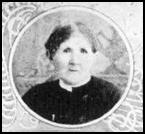

Catharine Stewart was born in 1816 in Morell and was 17 years old when her family immigrated to Canada. Peter Stewart was born in 1820 in Morell and was only 13 years old at the time.
Peter fights off a bear with a branding iron
“A bear came and got among the pigs and took one of them. I took a fire brand and gave chase, overtook the bear and struck him across the head, but he would not let loose the pig. [Our] dog, a large, heavy one, made an attack on the bear. Still he would not let loose, but he took the pig to the hill in the bush and had a good meal out of it and left what he could not eat under a turned-up maple tree.”
— Peter Stewart
Peter and his whisky – drunk oxen
It appears that Peter was a bit wild while growing up. His memoirs tell of a time while he was helping clear a neighbour’s farmland. “There was a great work party with many neighbours and their oxen working to clear trees and stumps.” Peter’s team of oxen were going slower than everyone else’s so he fed them each a bottle of whisky. Accordingly, they perked up! He also comments that, fortunately, they were not his own oxen!
Peter helps build the Brock Road
Peter worked for a while as a road builder, like his older brother, Duncan. Peter worked for Absolom Shade, one of the founders of the town of Galt, to build what is now Brock Road through west Puslinch township. This work provided a significant income for Peter.
Peter and his whisky…again
Peter also used to haul whisky to Toronto for David Allen, a distiller from Guelph. Peter and his partner Robert Allen (David’s brother) would sell the whisky for $0.20/gallon. Their trip from Guelph to Toronto and back would take four days.
Raising the orphans
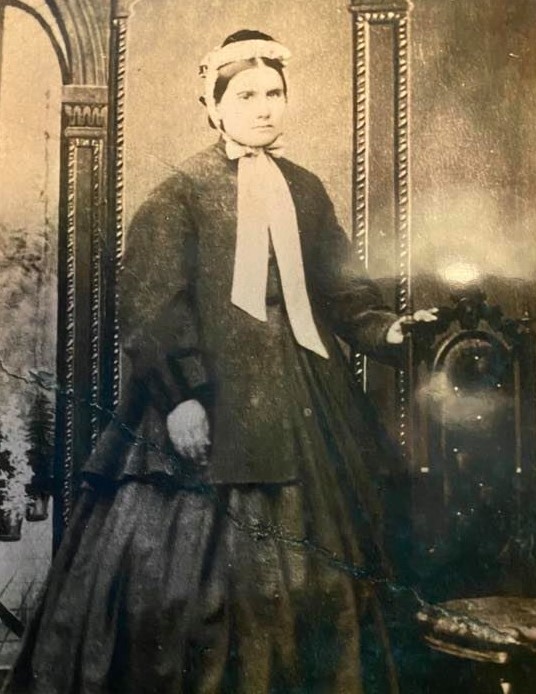
Catharine and Peter were 32 and 28 and still single when their brother Robert’s children were orphaned. They took over the farm and became quite prosperous. Their younger brother, William Stewart, moved to Hamilton, as did Robert’s orphaned sons, Robert III and Hugh, when they were adults. Robert’s orphaned daughter, Catharine Stewart, moved to Bellflower, Illinois, USA with her husband, Hugh McIntyre.
The 1851 and 1861 census records shows the family still living in a log home. At some point after 1861, Peter Stewart built a stone house for his family. That stone house (shown at the top of this page) still stands today on the Donkey Sanctuary property, and is a designated Puslinch Heritage building. It’s not known exactly how old the house is.
Peter starts his own family
Peter waited until he was 46 years old, until after Robert’s orphans were grown and gone to finally marry in 1866 to Catherine McLean, who was 23 years his junior. Catharine McLean was born in Inverness, Scotland as the daughter of Neil McLean and Mary McKenzie. Together, Peter and Catharine had nine children of their own. Tragically Peter’s wife, Catherine, also died prematurely at the age of 40, leaving Peter and his sister Catherine to raise the children.
Catharine Stewart – the remarkable care-giver
Catharine Stewart must have been a remarkable woman. After her brother Robert married and started his own family, Catharine would have helped her widowed mother continue to raise her youngest two brothers, Peter and William to adulthood. Then she helped raise her brother Robert’s orphans until they were old enough to live on their own. She continued to live with her brother, Peter, even after he married and had children. Catherine was in her 60s when her last nephew was born. When Peter’s wife Catharine McLean died prematurely, leaving Peter’s children without a mother, Catharine Stewart became primarily responsible for these children’s care also. Catharine Stewart never married, nor had any children of her own, but spent her entire life raising her younger brothers, and the thirteen children of her two brothers, Robert and Peter.
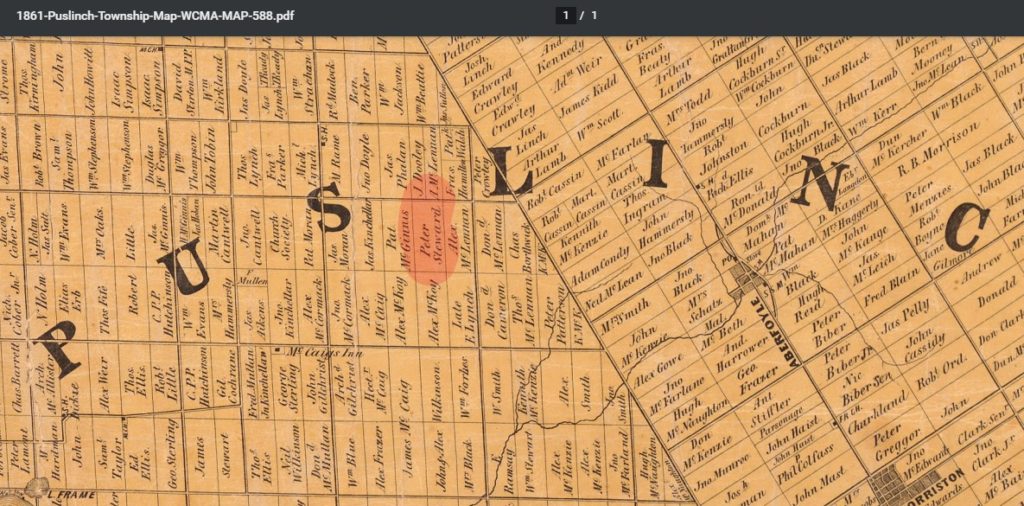
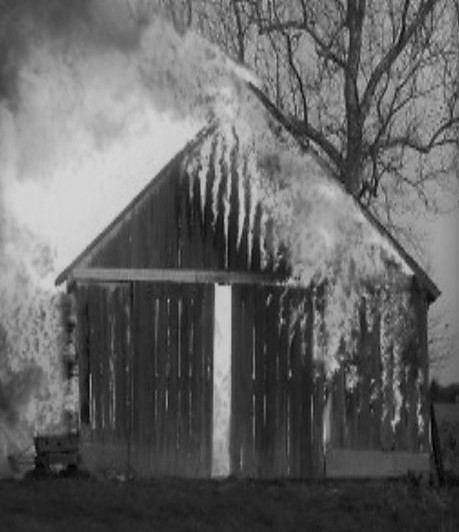
Barn Fire Revenge
In 1877, Peter’s next-door neighbour, Patrick McGinnis (see map above), fell upon hard times after his father died, and had his farm foreclosed on. The farm went up for auction and Peter Stewart purchased it, thereby doubling his land holdings. However, Patrick McGinnis was not happy about losing his farm, and later that night he came onto the property and set Peter Stewart’s barn on fire, killing all his animals and destroying all his farm equipment. Patrick was charged and convicted of incendiarism and sentenced to three years in Kingston Penitentiary.
Peter Stewart and Duff’s Presbyterian Church
Peter served as an elder at Duff’s Presbyterian Church for 27 years. He also ran the local Sabbath School for many years. He was remembered as an esteemed and generous man.
Peter Stewart and his sister Catherine remained on the family farm until they died in 1901 and 1904 respectively.
Neil Stewart – the farm enters its 3rd generation in the family
Peter’s son, Neil, was born in 1872 in Puslinch. He had already taken over running the farm when his father died in 1901. Neil married Catharine MacPherson. They had two children:
- Peter Douglas Stewart in 1904. He inherited the family farm.
- Donald McLean Stewart in 1907. He became a truck driver.
Peter Douglas Stewart – the farm enters its 4th generation in the family
Peter Douglas Stewart, who went by Douglas, married Anne Mulholland. Douglas resided on the family farm throughout his entire life. By the mid-40s, as his father was turning 70, it appears that Douglas took over running the farm. When his father, Neil, died in 1954 in nearby Morriston, Douglas inherited the farm and continued to run it presumably until his death, at which point the Stewart farmhouse passed out of Stewart hands after 4 generations and 130 years of Stewart ownership.
The stone farmhouse, built by Peter Stewart still stands today. It is now used as an office for The Donkey Sanctuary of Canada.
Duff’s Presbyterian Church, Puslinch, Ontario, Canada
The Highlanders in Puslinch held fiercely to their homeland customs and language and Duff’s Presbyterian Church, where they worshipped, originally held services only in Gaelic and continued worship in Gaelic into the early 20th century.
Among the founding elders of Duff’s Church were Robert Stewart, Hugh Gillespie (Robert’s father-in-law) and Peter McNaughton (believed to be widow Catharine Stewart (nee McNaughtan)’s cousin.) Widow Catharine Stewart is listed as one of the founding members.
Fireplace Ceramic Paintings
The master bedroom fireplace has some beautiful painted ceramic inserts. I’d love to know more about the images. If you know anything about these images, please leave a comment below.

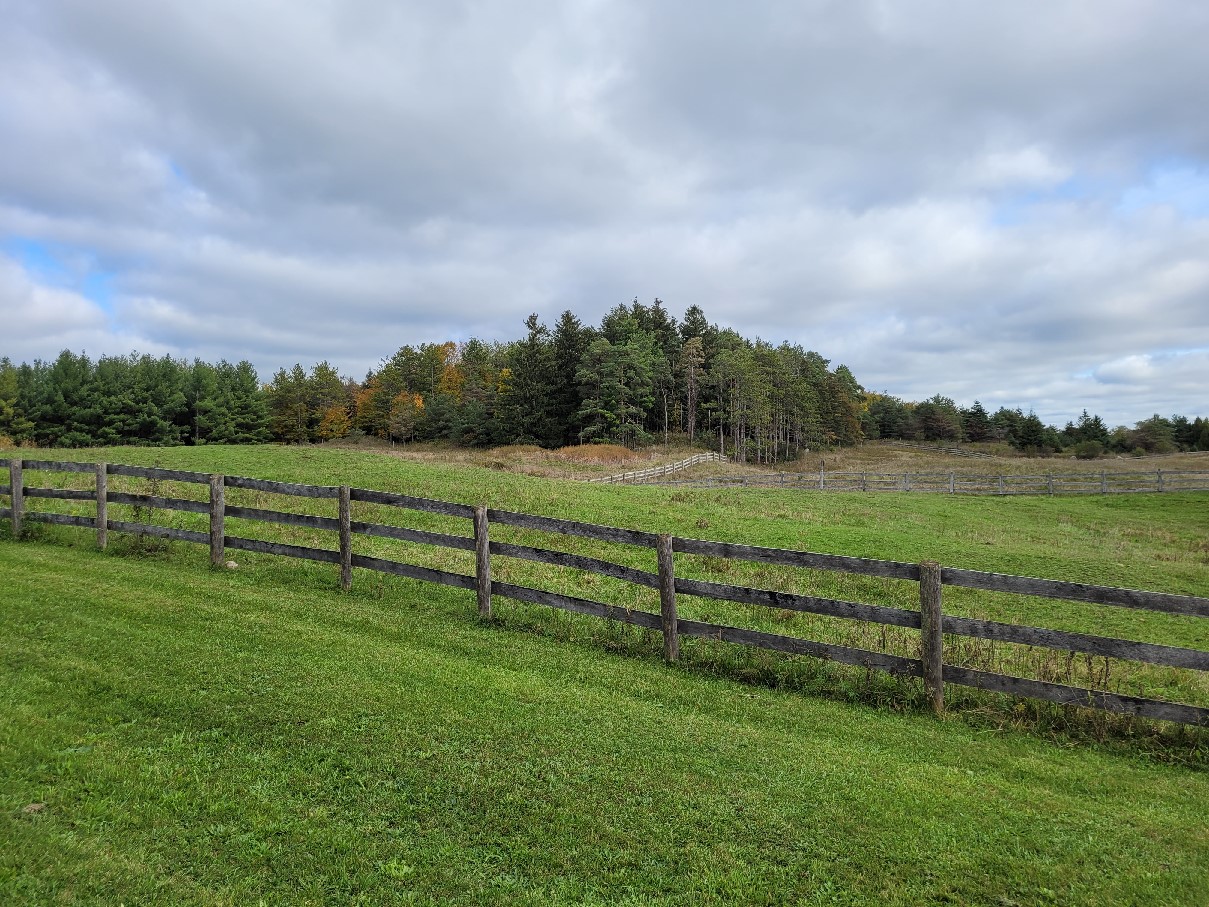
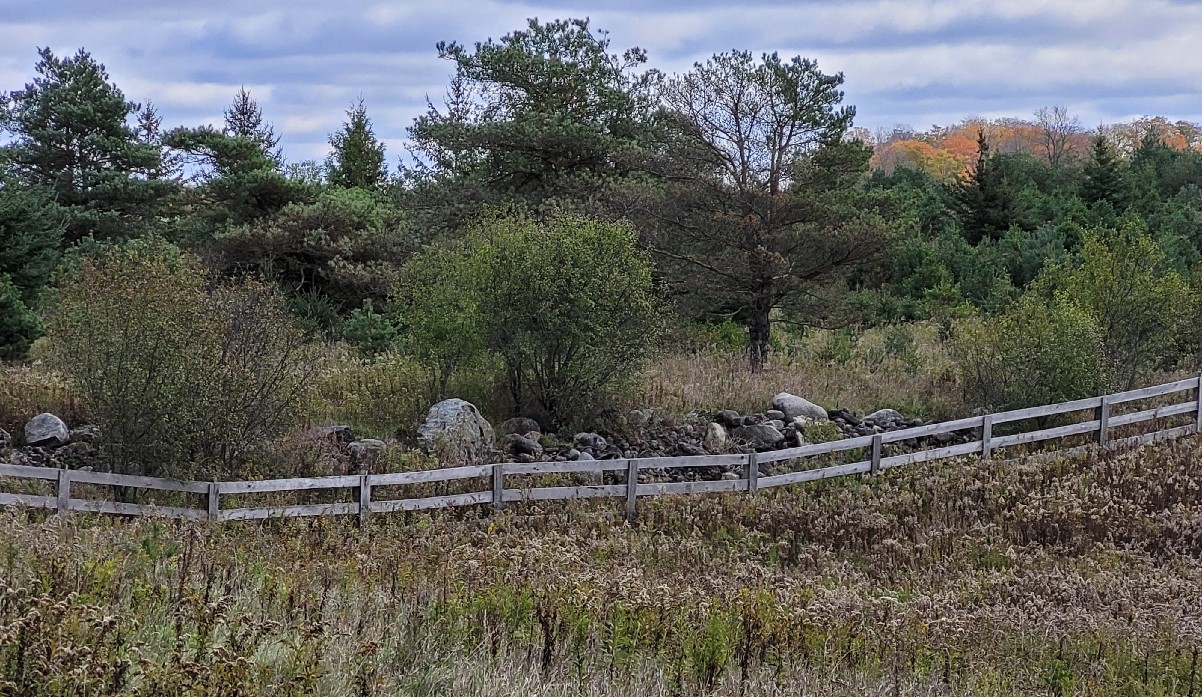
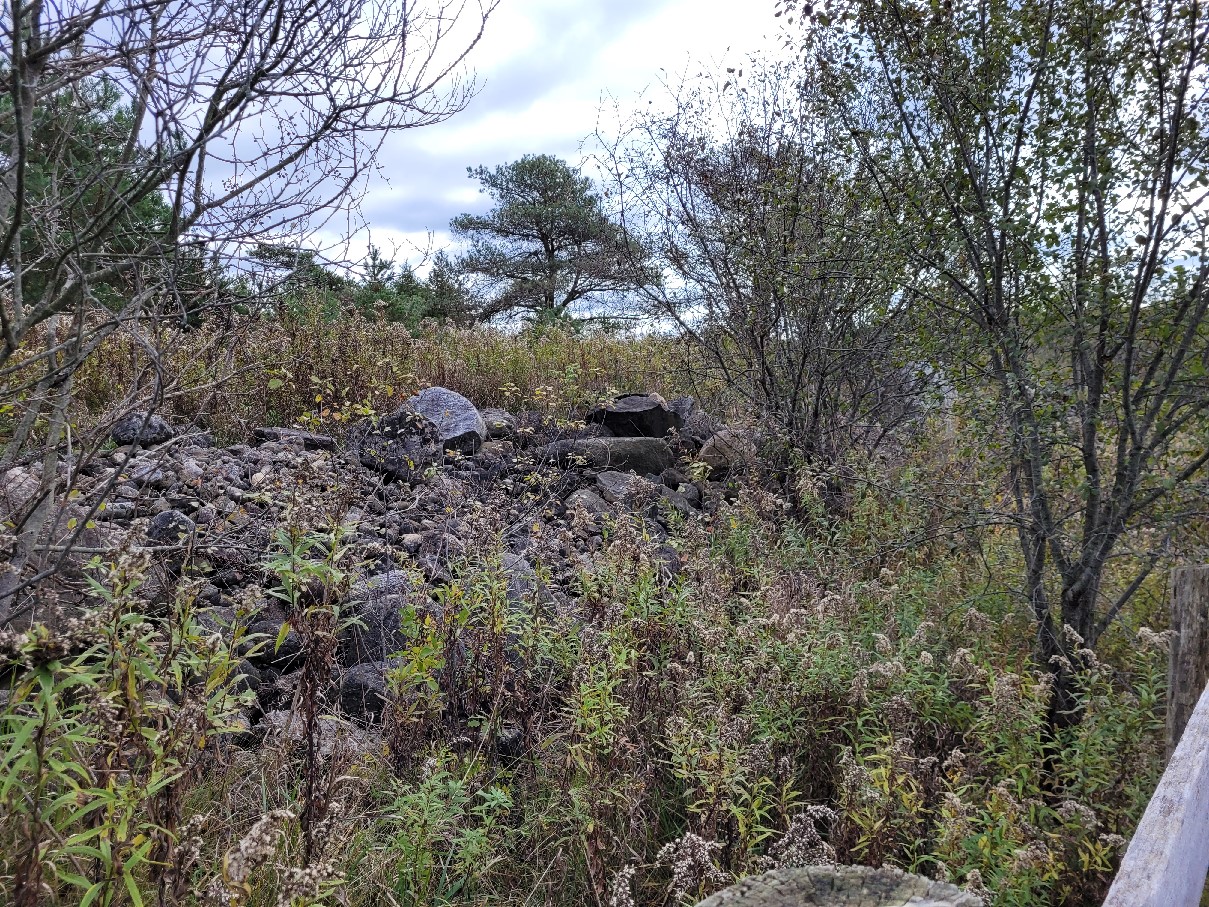
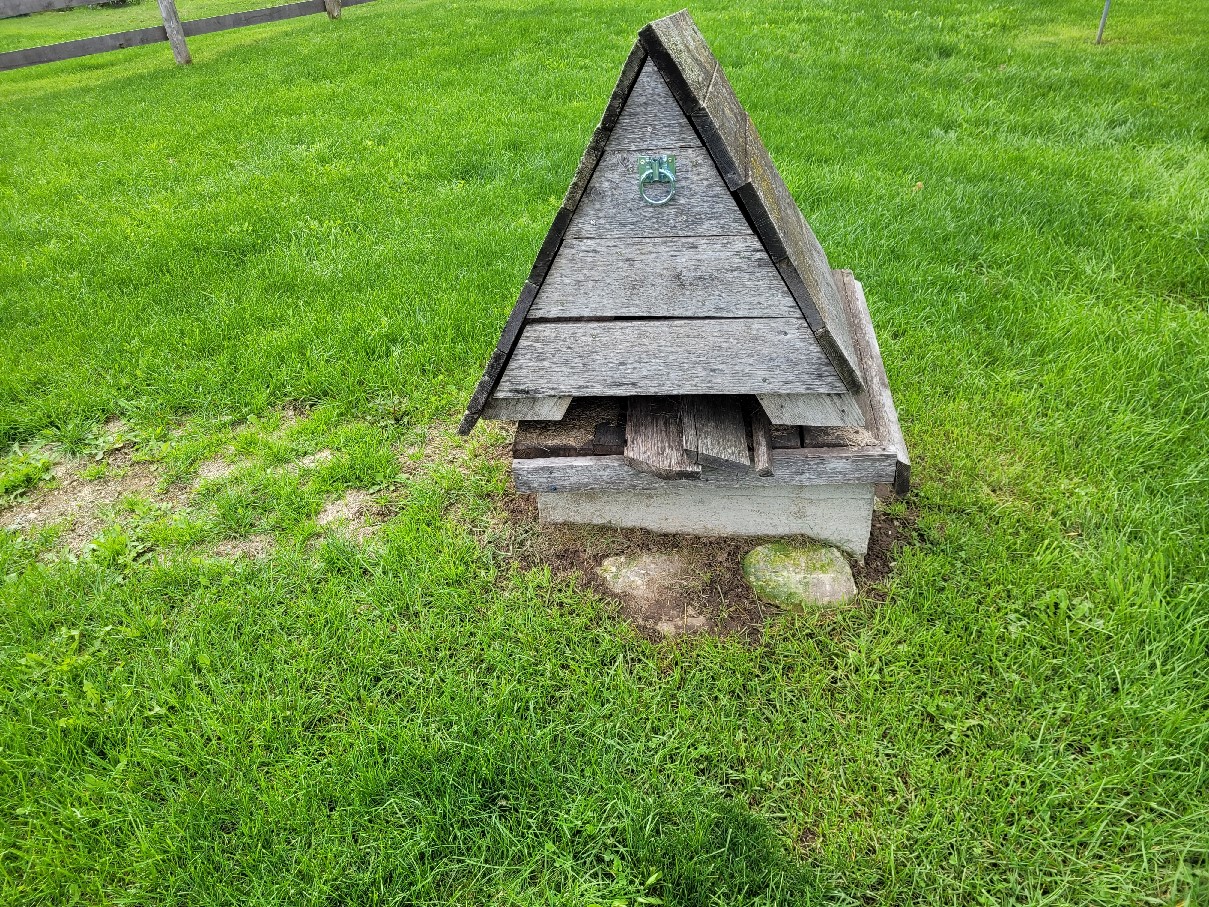

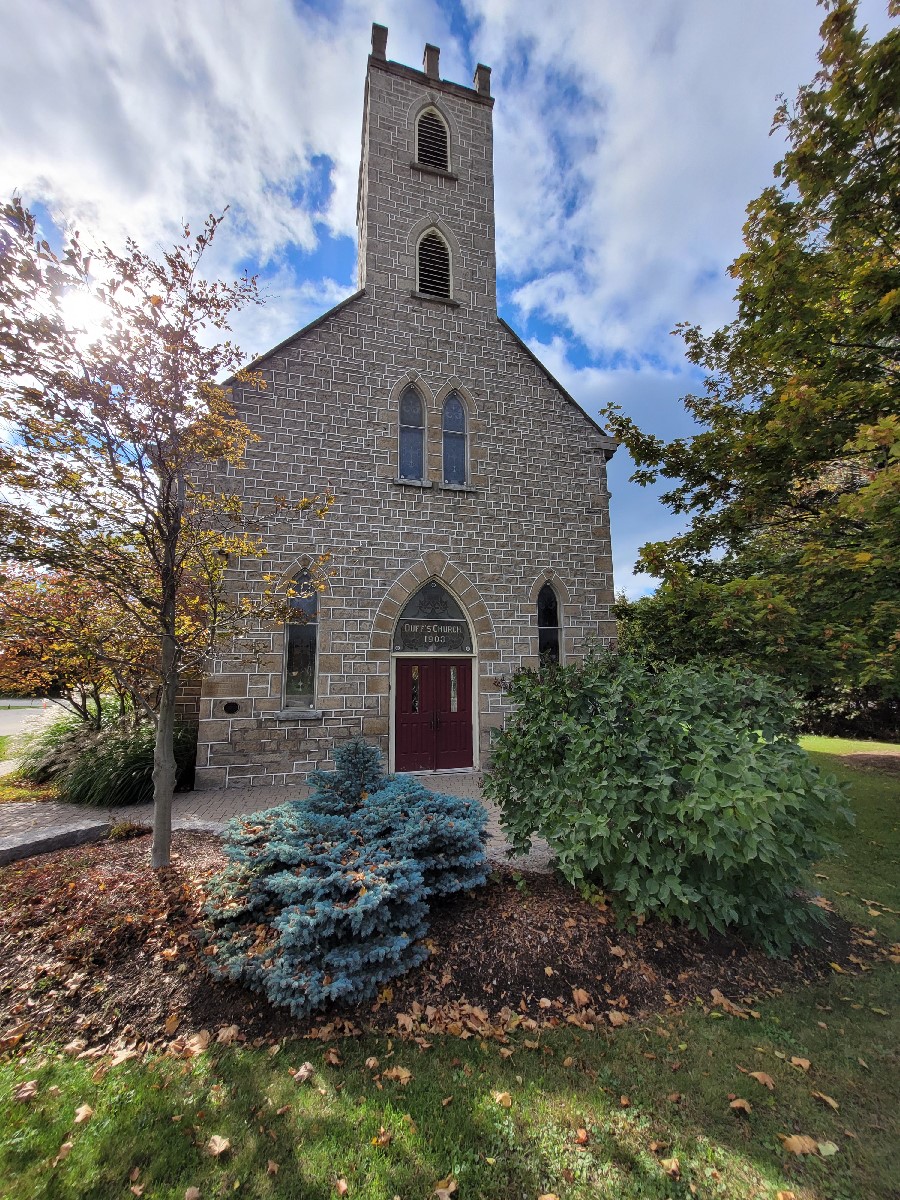
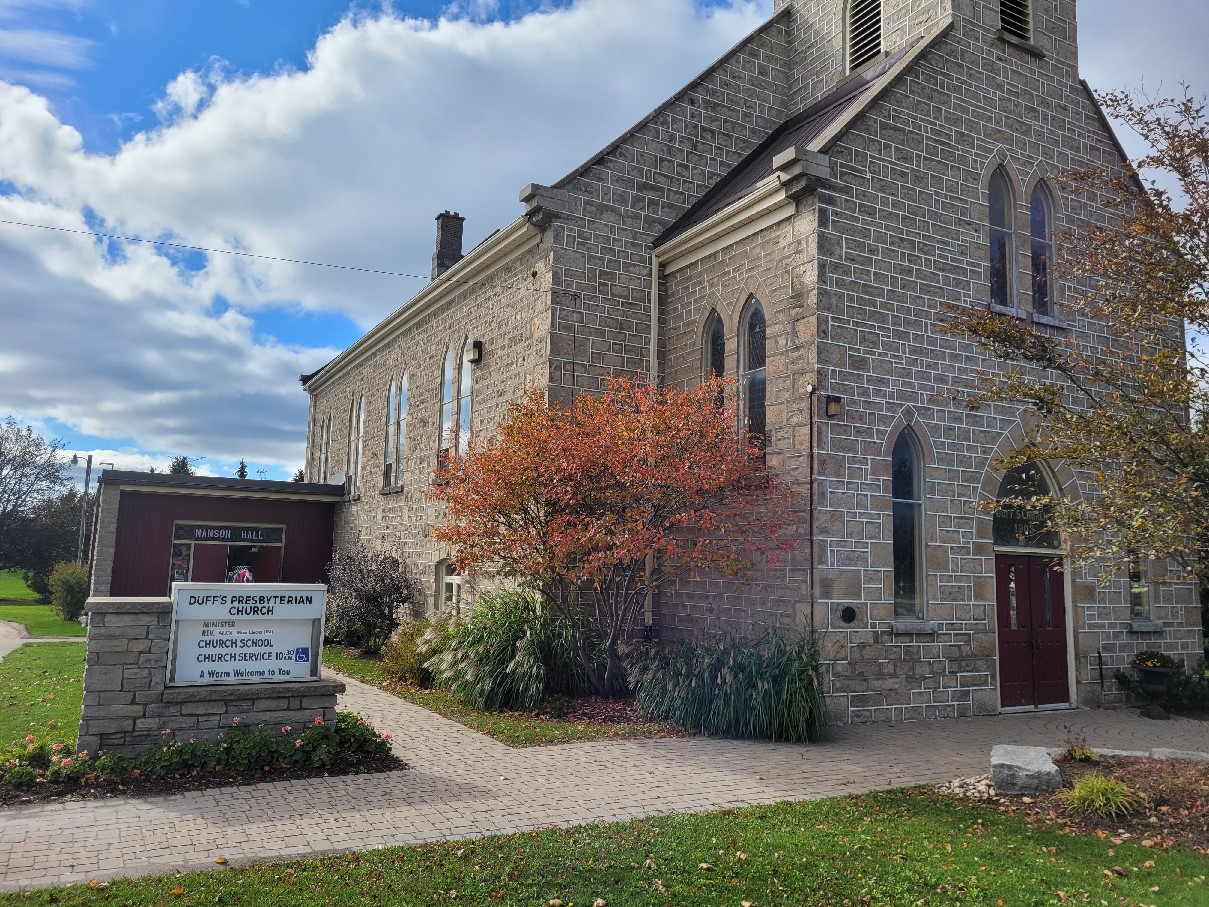
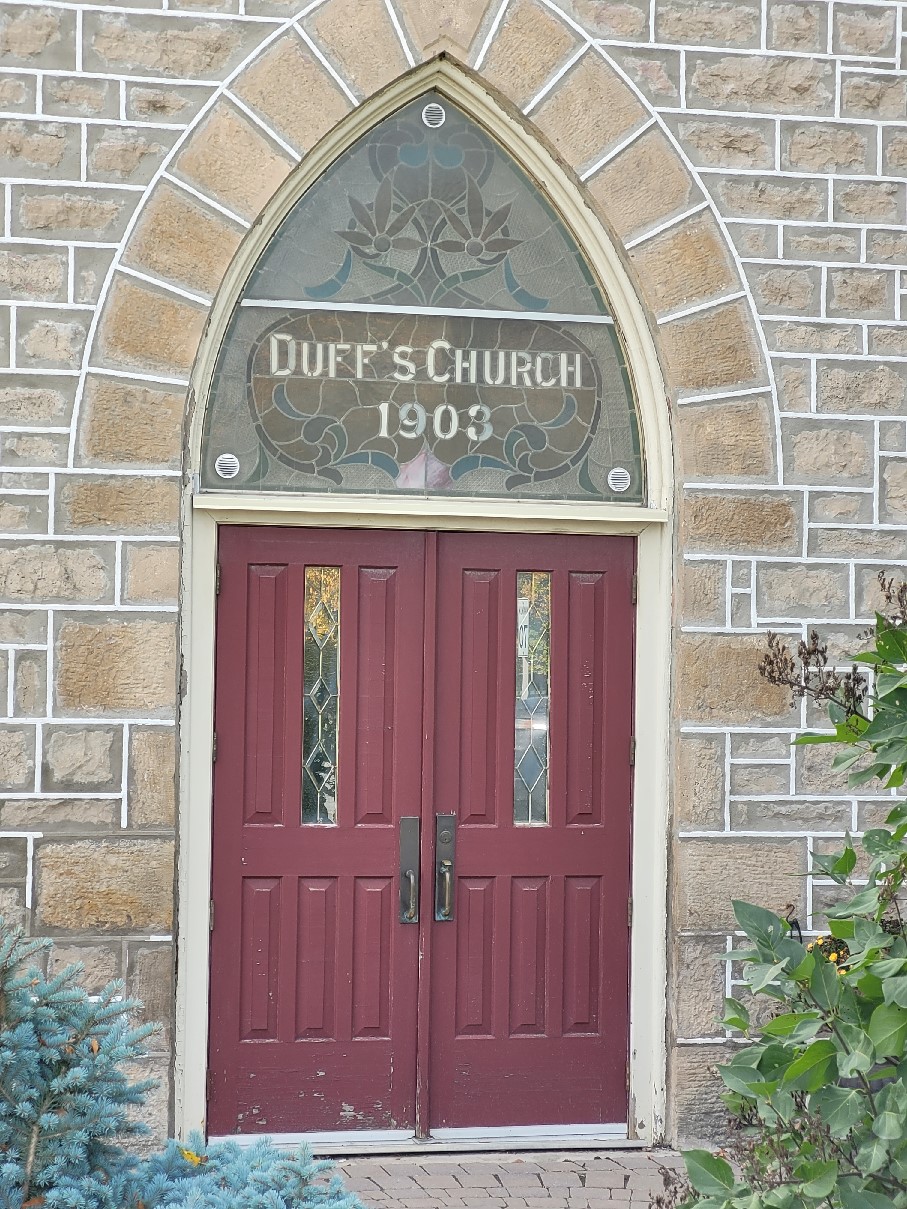
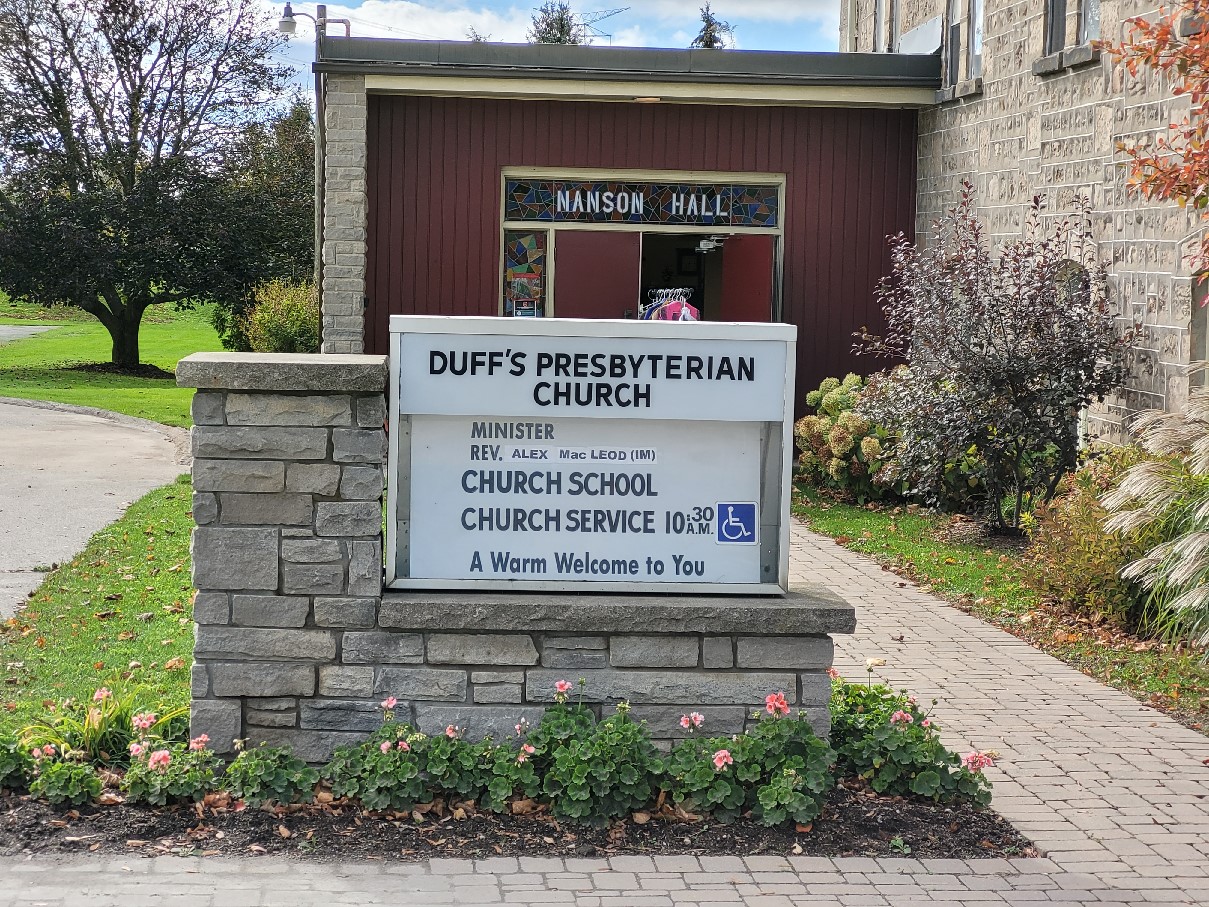
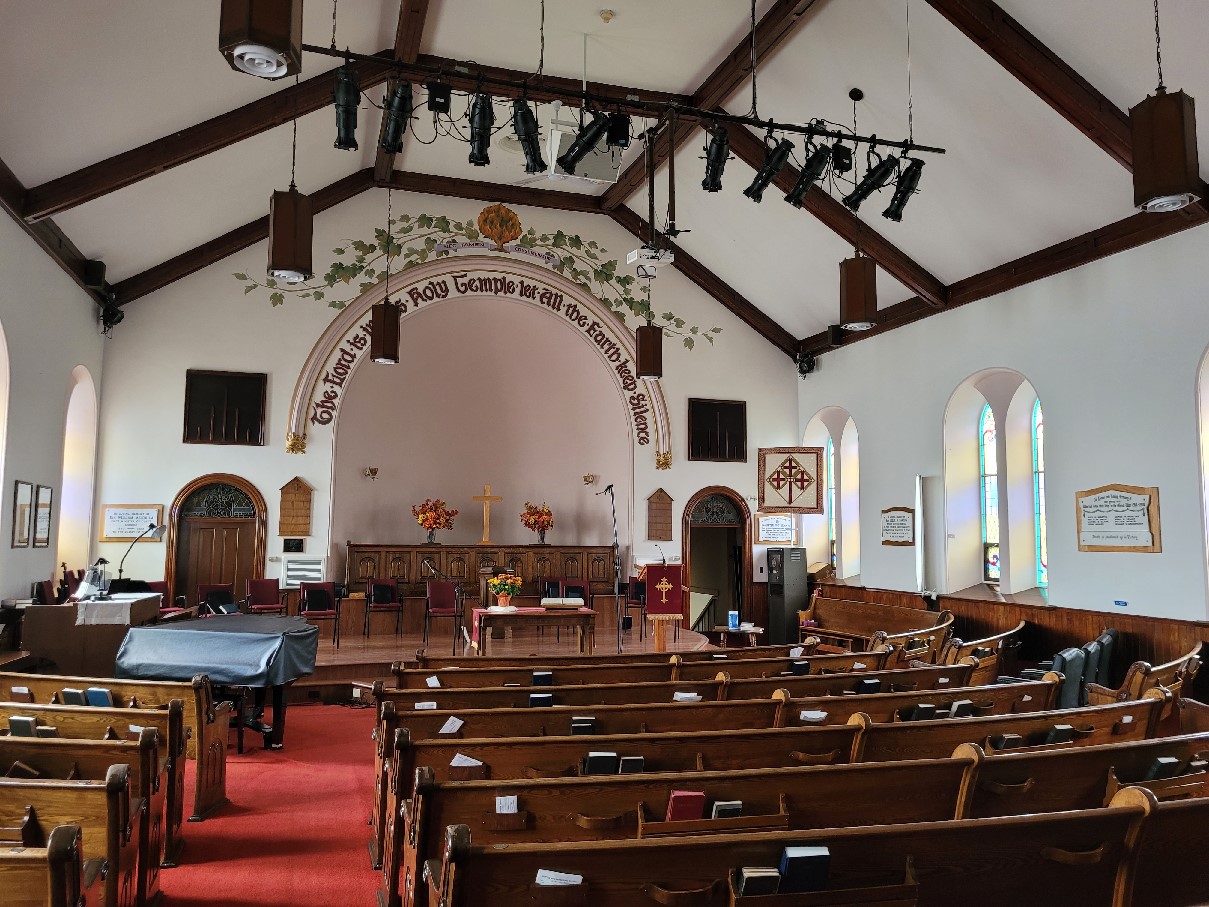
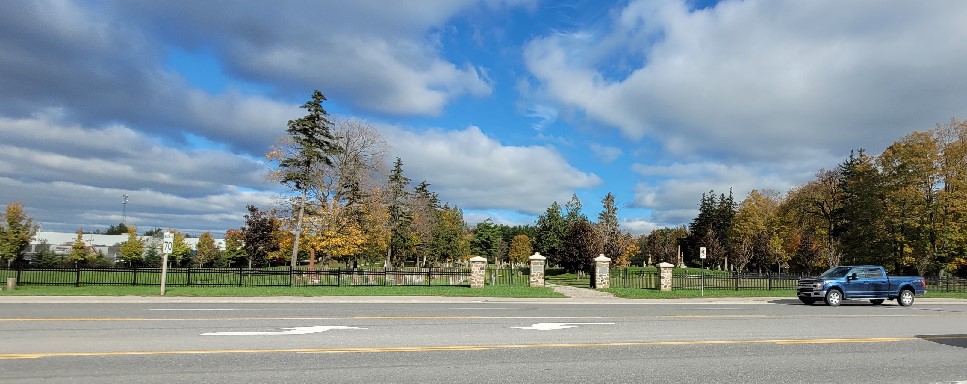
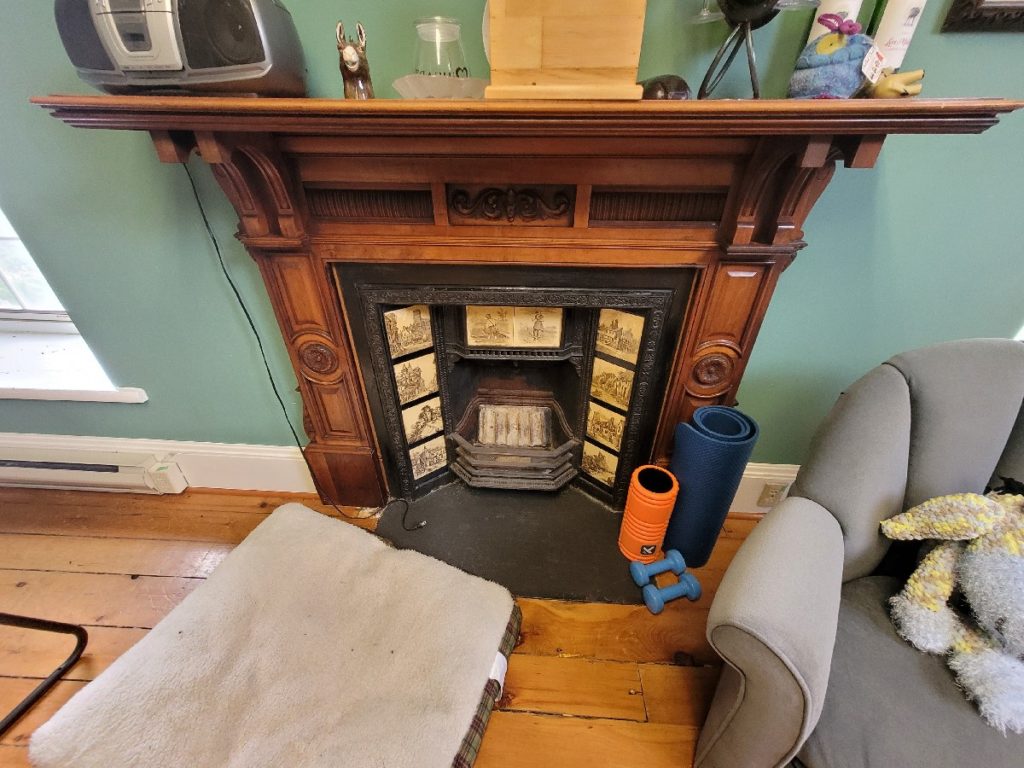
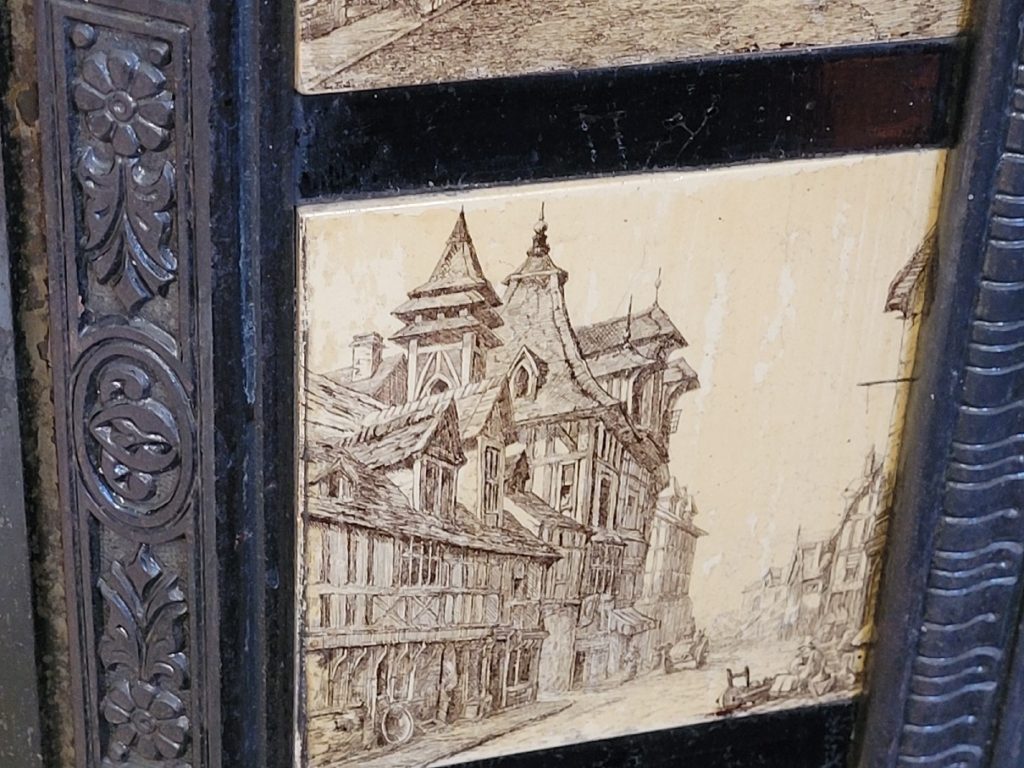
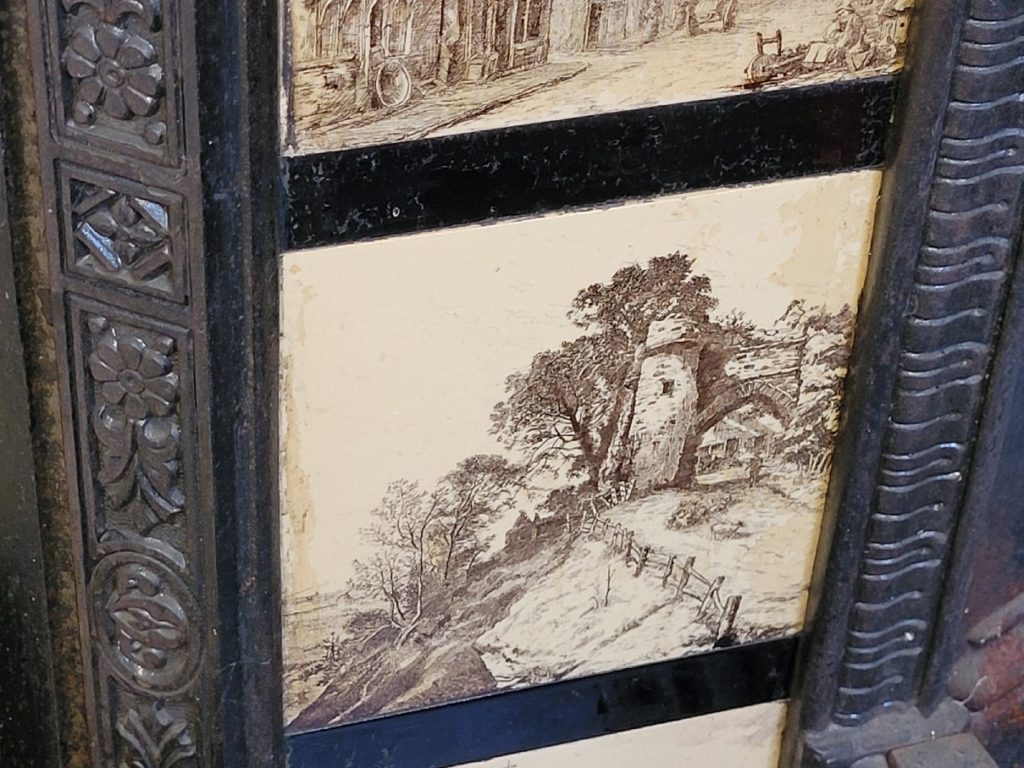
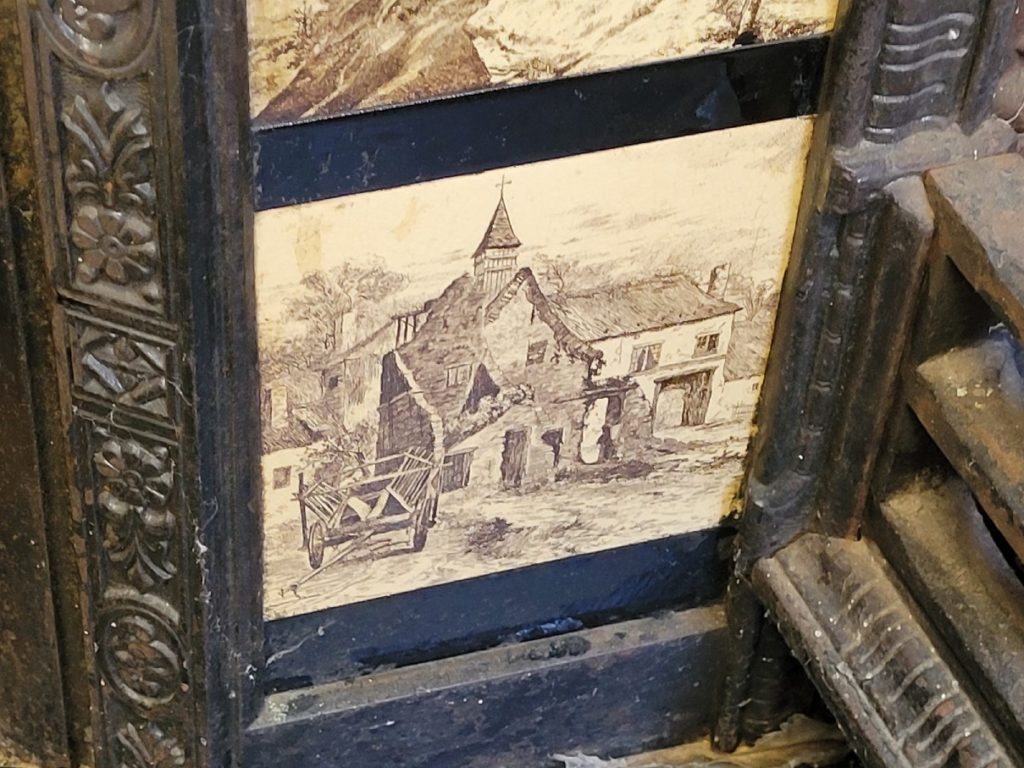
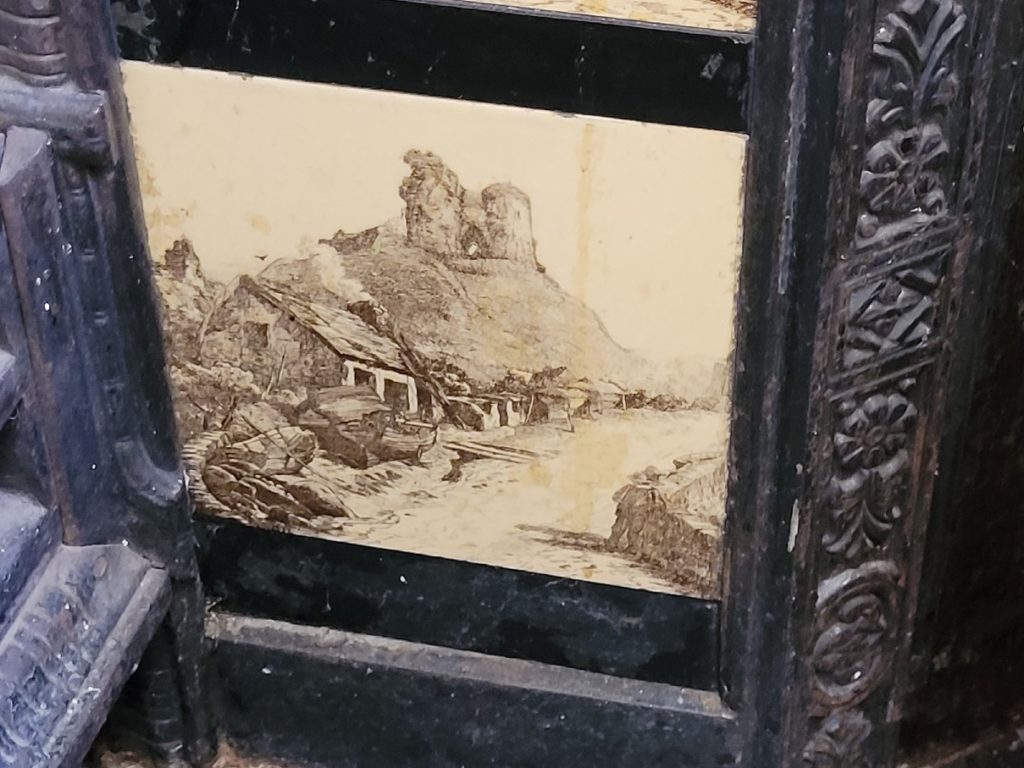
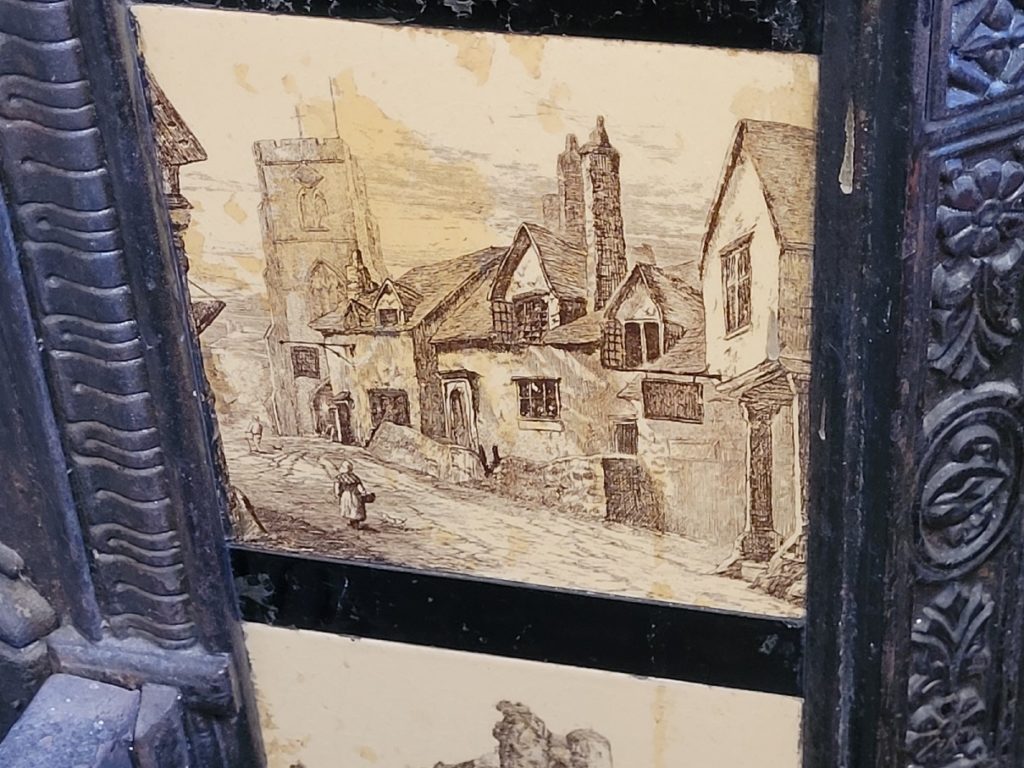
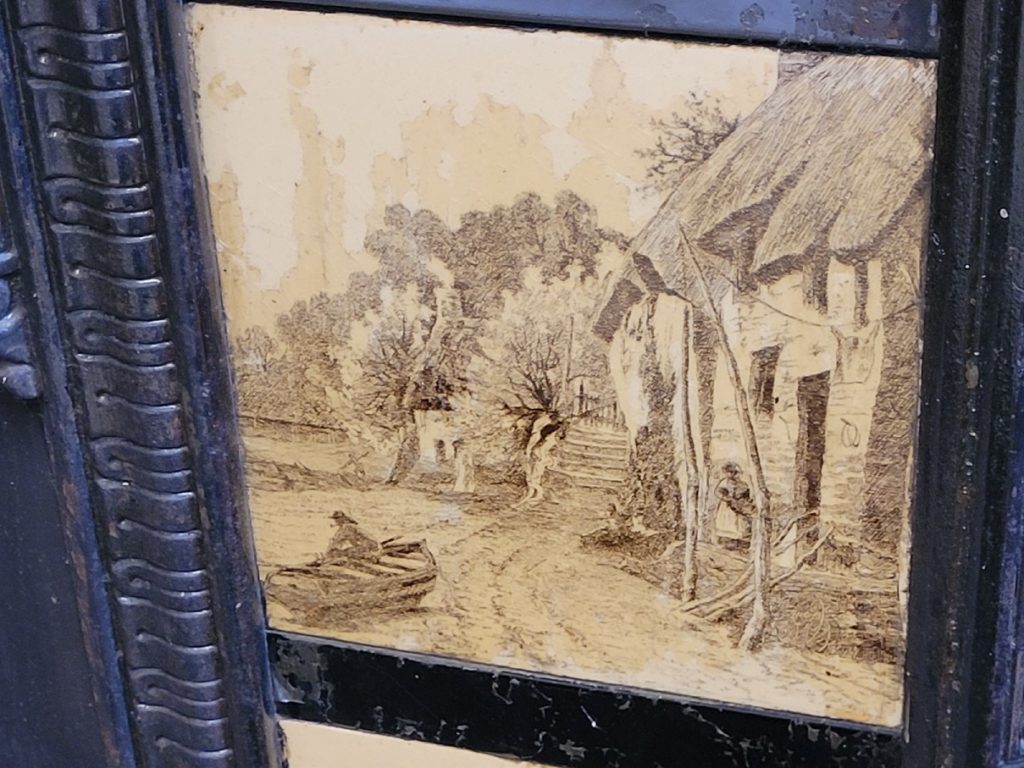
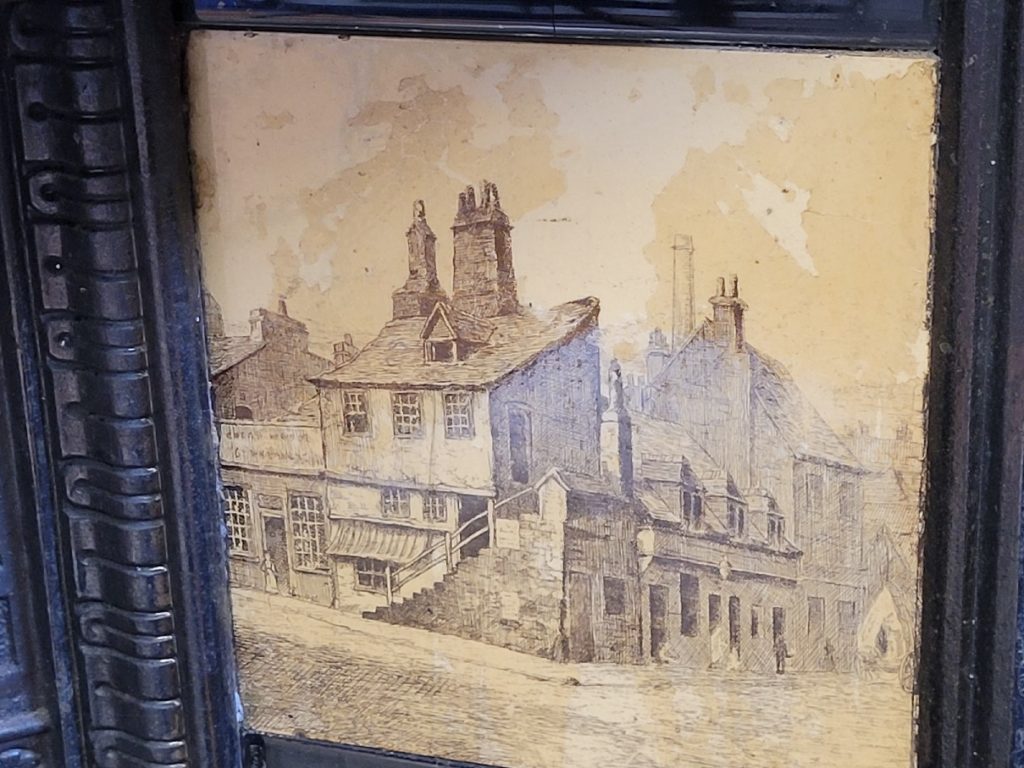
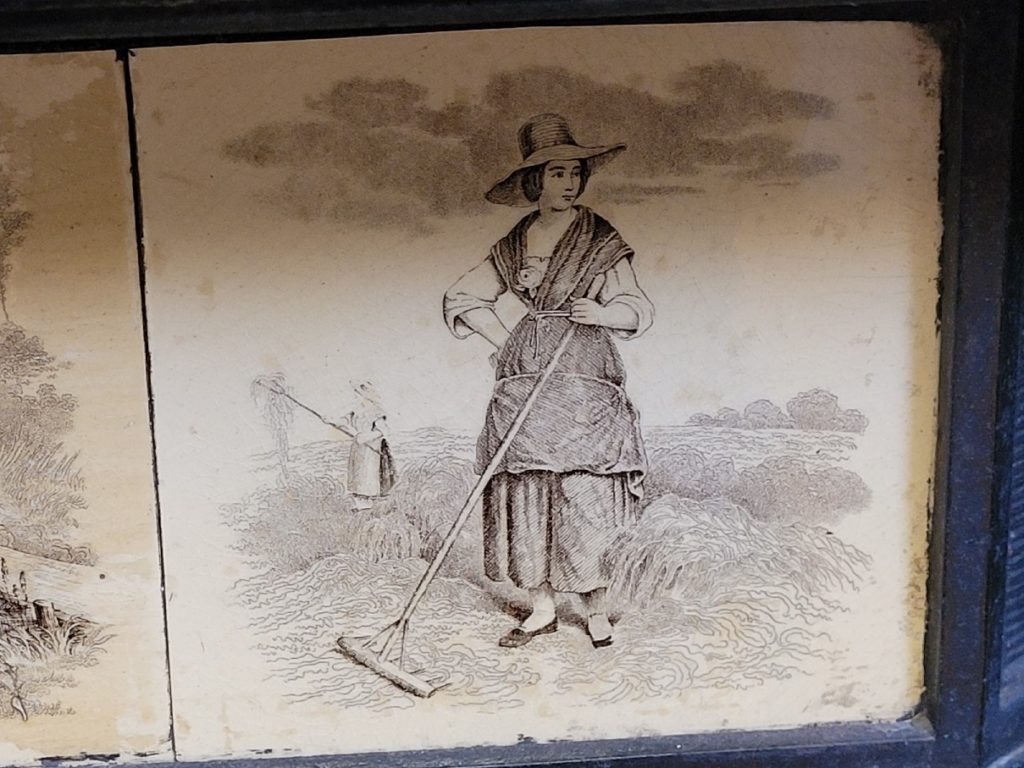
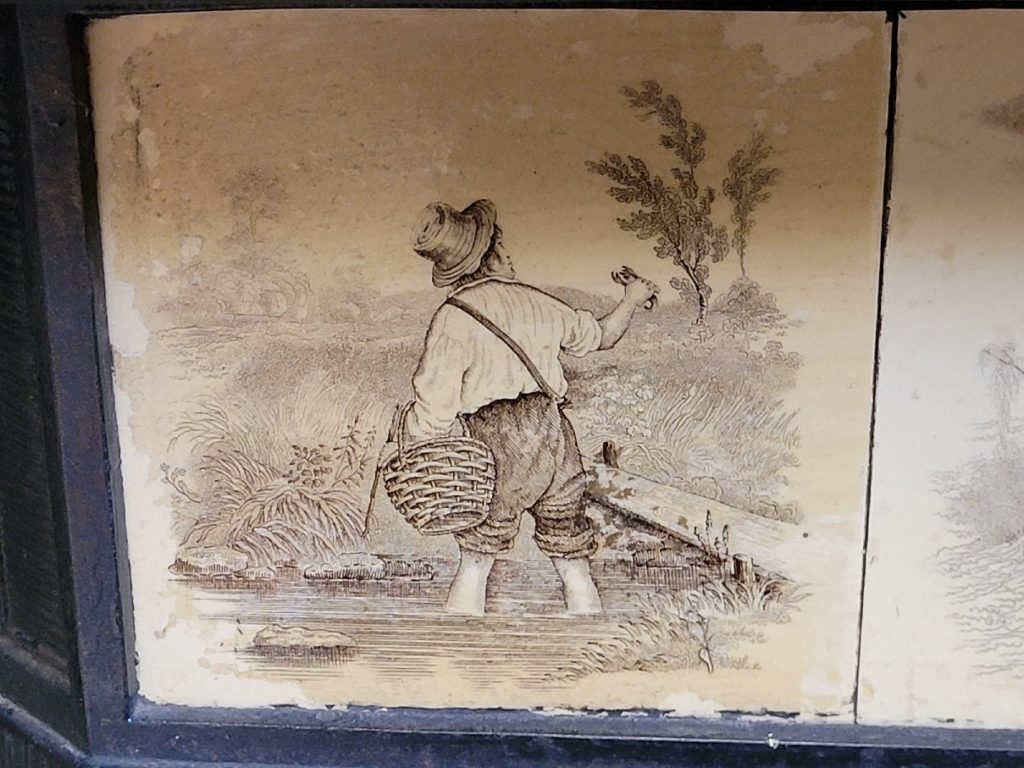
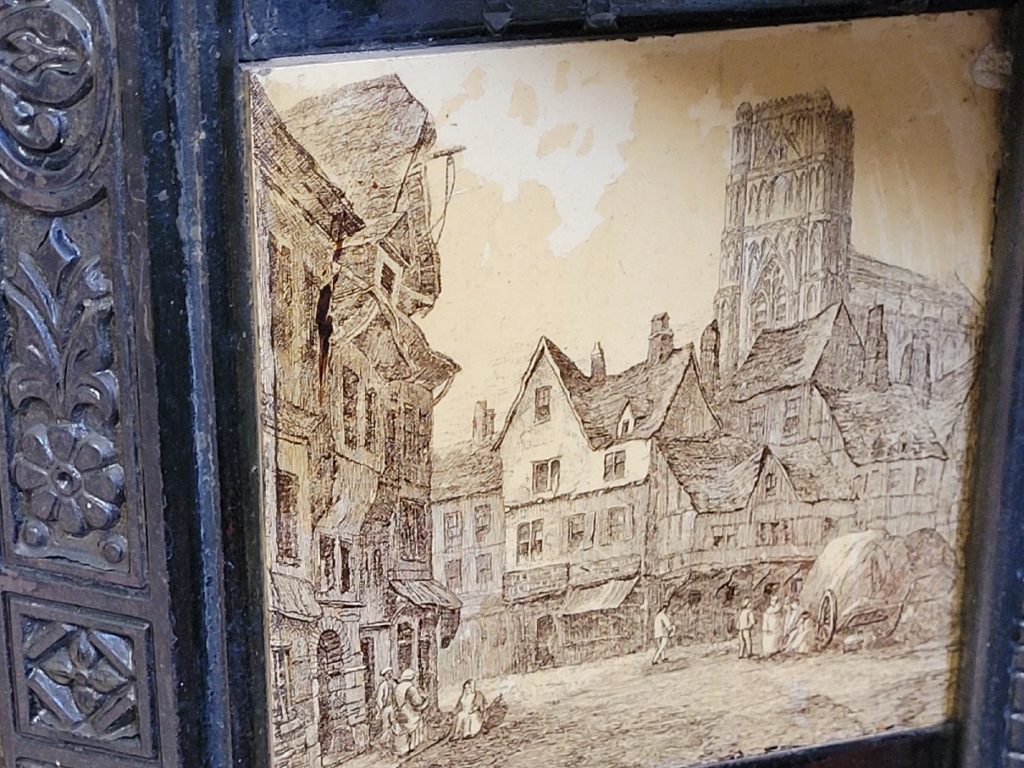
Wow, what a fascinating weaving of stories, Ryk. I was reading a letter my great grandfather, John A. Ord, wrote to his eldest granddaughter in which he refers to Jean and Chief Brown and also the Stewarts all of whom he visited in December of 1940. Family history comes alive when there are stories to tell and not just dates and names. Thank you
Andrea, thank you so much for your comment and for sharing that story. It’s great to learn of the connection. Did you see the blog post on Jean Ord’s needlepoint sampler?
https://rykbrown.net/jane-ords-cross-stitch-sampler-from-1832/
Yes, Ryk, I shared the link about the sampler with my extended Ord family. Many of them were quite interested. I have a few photos of Jane’s brother Andrew.
Excellent!
WOW! Thanks Ryk for this informative, interesting, and delightful piece on the Stewarts in Puslinch! The photos are amazing and highlight the craftsmanship in the beautiful home that Peter Stewart built. What a labour of love, and a wonderful tribute to your kin; their resilience, stewardship, community spirit, faithfulness, and most of all their lives & living that shaped many; past & present!
Thanks, Sue. It certainly is a labour of love. I’m delighted that it resonated with you.
Ryk
I note that you have placed the clachan of Morell in Easter Glentarken, the Clachan was in fact on the hillside to the east of the present day St Fillans, between Tynreoch and Dundurn Mill. as shown on Points map of 1590.
James, thank you very much for your comment. May I ask what your interest is in Morell or the Stewarts? It’s always a pleasure to meet someone with a shared interest.
I think you may have confused Pont with Stobie. Pont does not show Morell. He shows Mewy at that location. It is Stobie in 1783 who shows “Moral” at that location. Stobie’s map is the only map that I am aware of that gives a location for Moral.
On my old site, https://sites.rootsweb.com/~rykbrown/comrie_stewarts.htm you’ll see that I previously followed Stobie, as you suggest, and I believed that Moral and Mewy were the same place. However, recent research has shown that Stobie was in error.
James Carron from the Courier places Morell in Easter Glentarken:
https://www.thecourier.co.uk/fp/lifestyle/outdoors/take-a-hike/760784/a-pilgrimage-to-jerusalem/
The Comrie OPR for the late 1700s to early 1800s consistently shows the same families as residing in Easter Glentarken and Morell, suggesting that the two place names were used interchangeably and supporting Carron’s position. Local historian, Peter McNaughton, FSA Scot, https://www.highlandstrathearn.com, who grew up in Comrie, also supports that Morell was located in Glen Tarken and is one of the settlements comprising Easter Glentarken. When I enquired with Peter personally as to the contradiction with Stobie, he indicated that Stobie is not always accurate and that the knowledge of local historians should be preferred to Stobie. I’m inclined to agree. Thus, I now follow the latter.
If you have anything that support’s Stobie I would certainly be interested in seeing it.
Ryk
https://stewartsofbalquhidder.com/